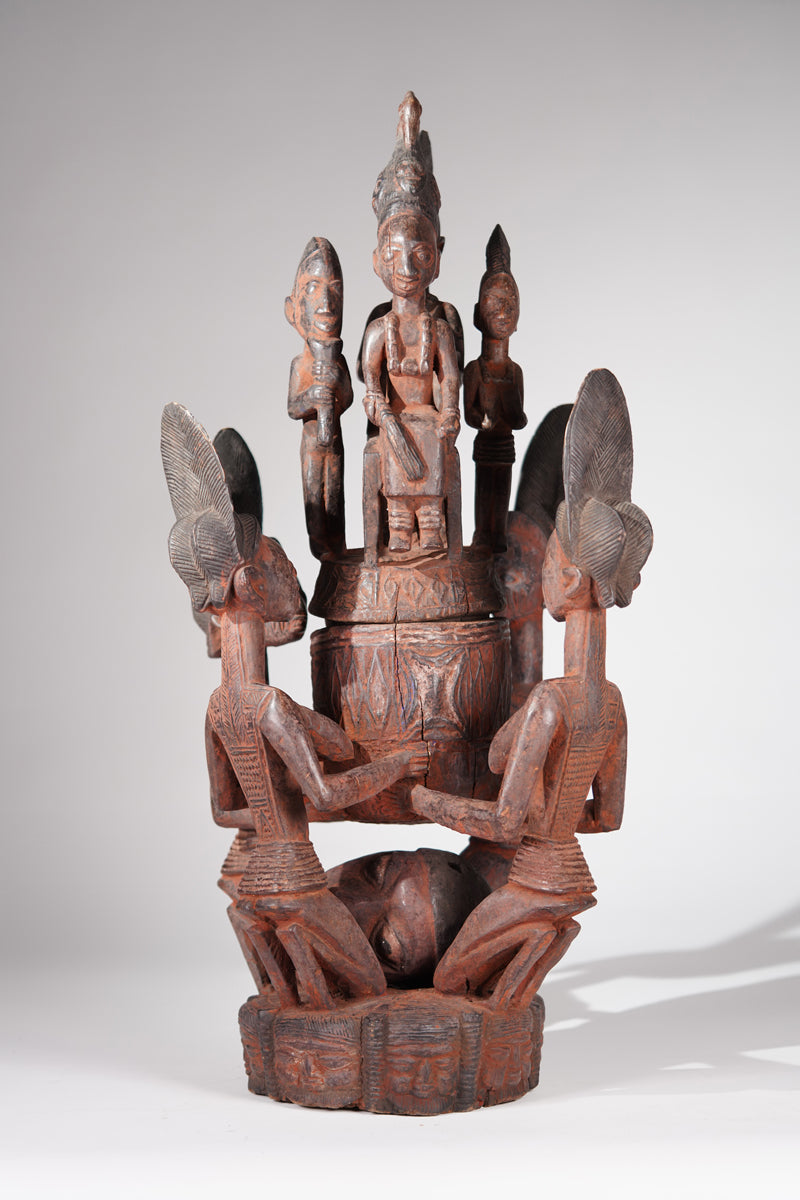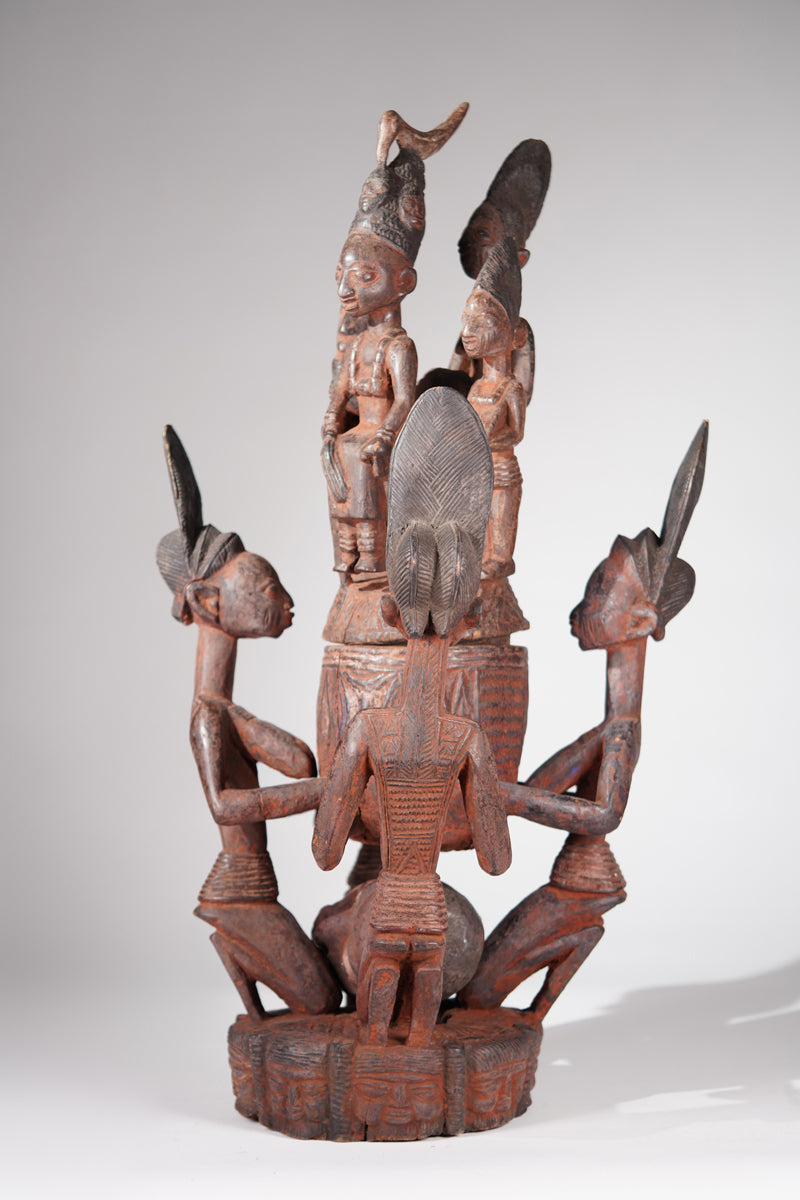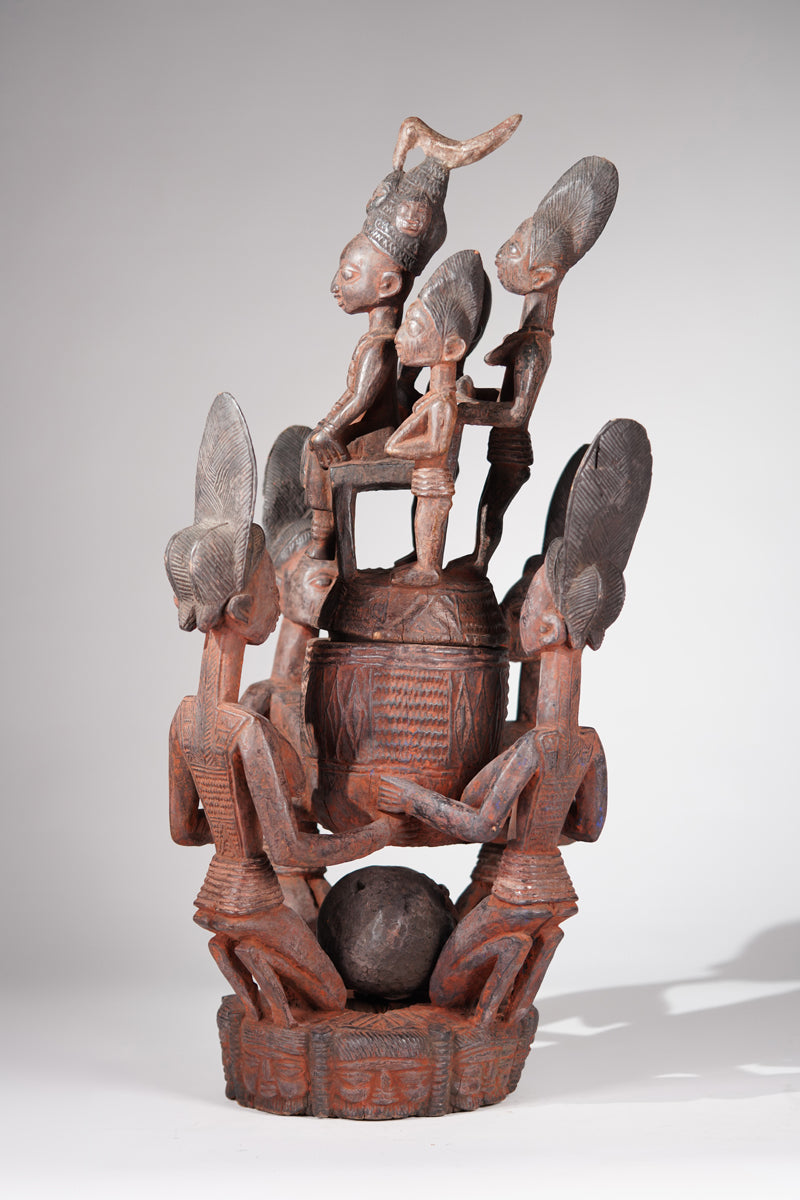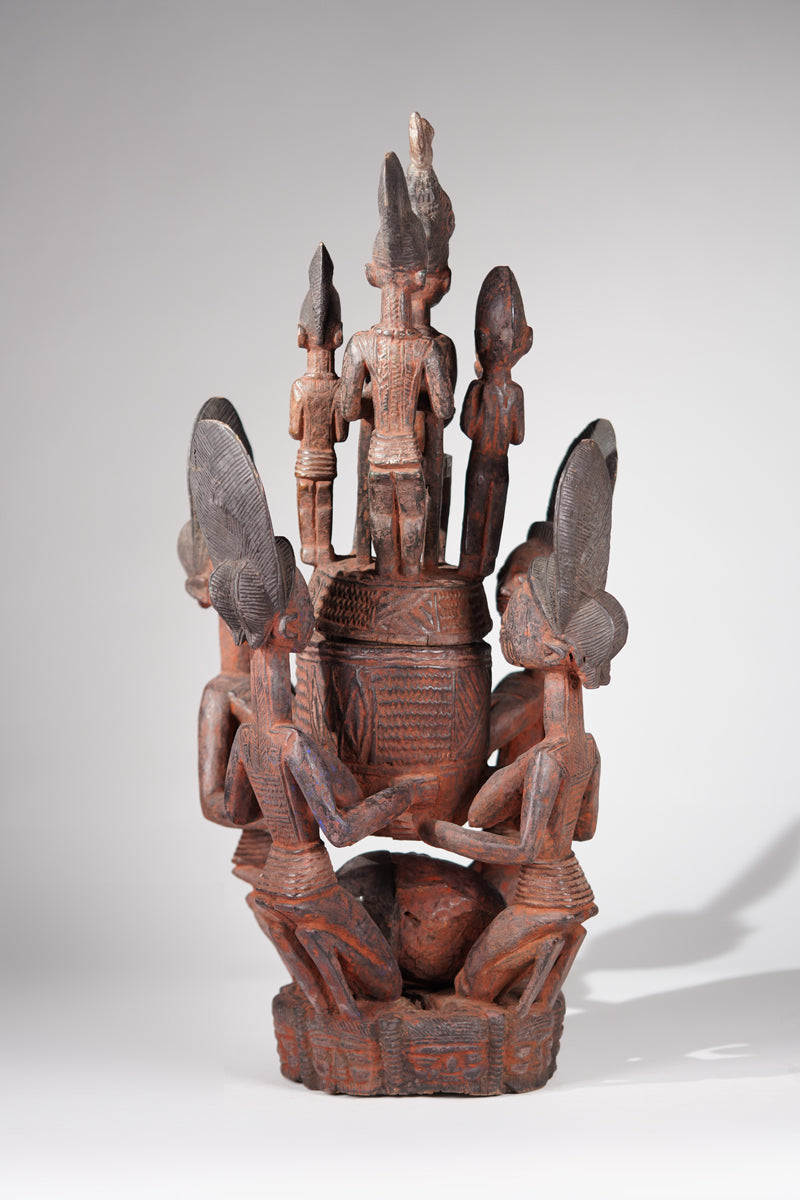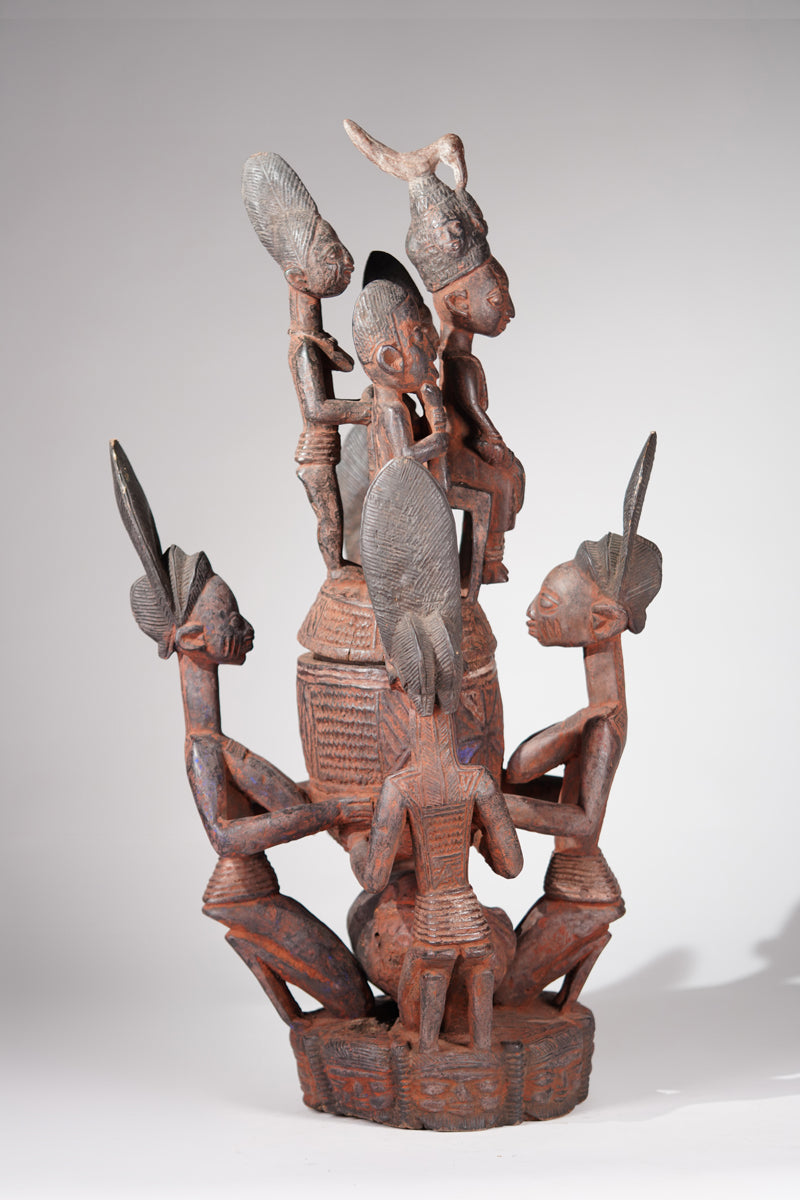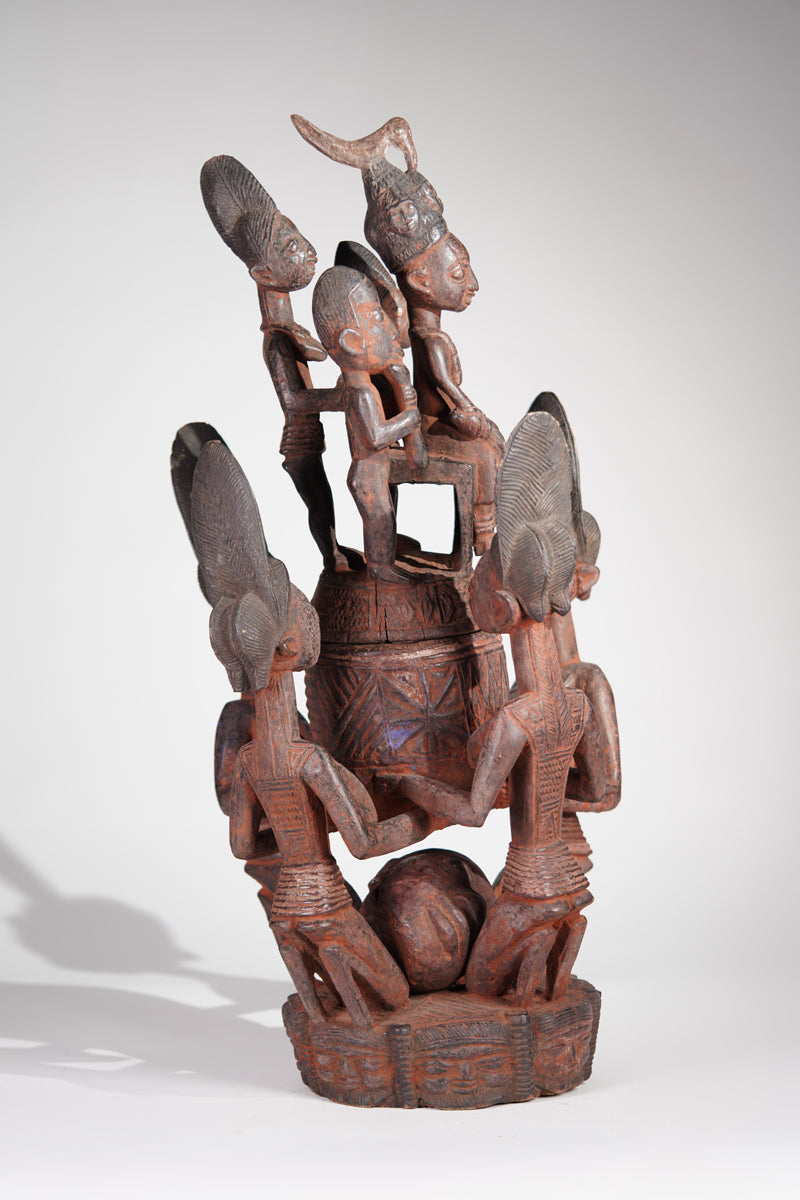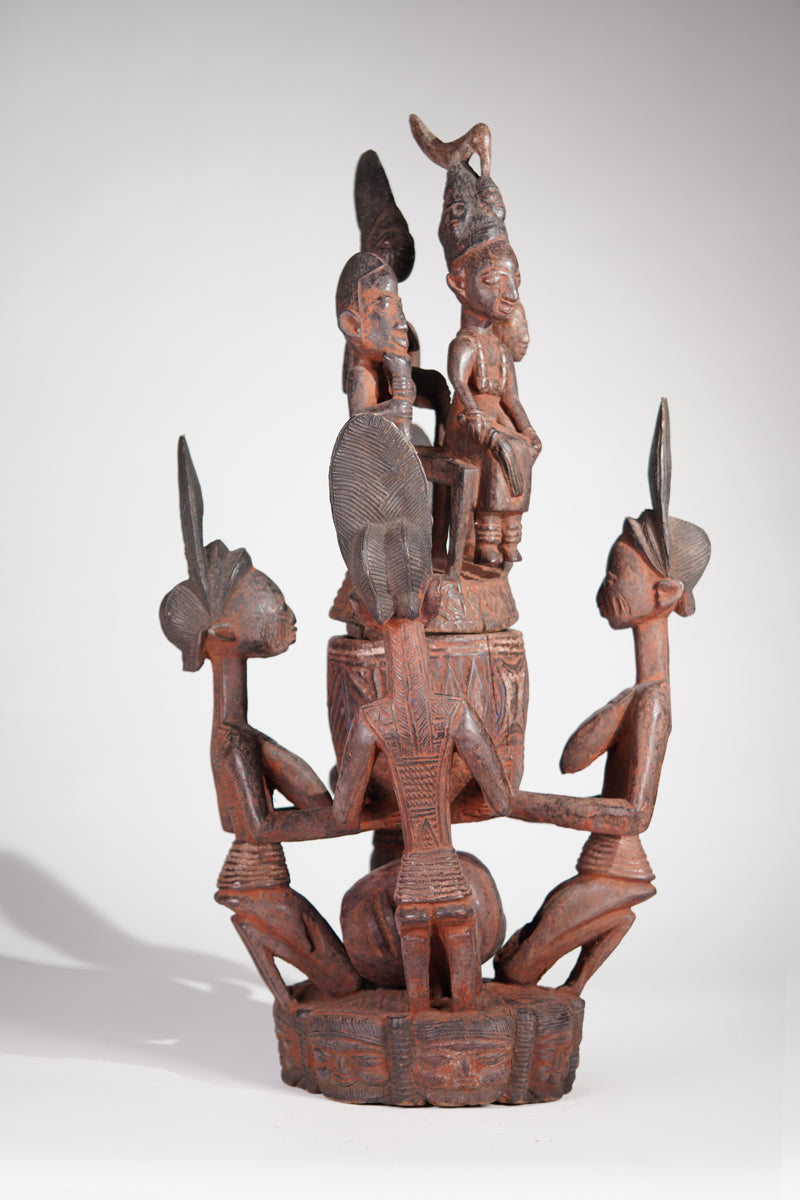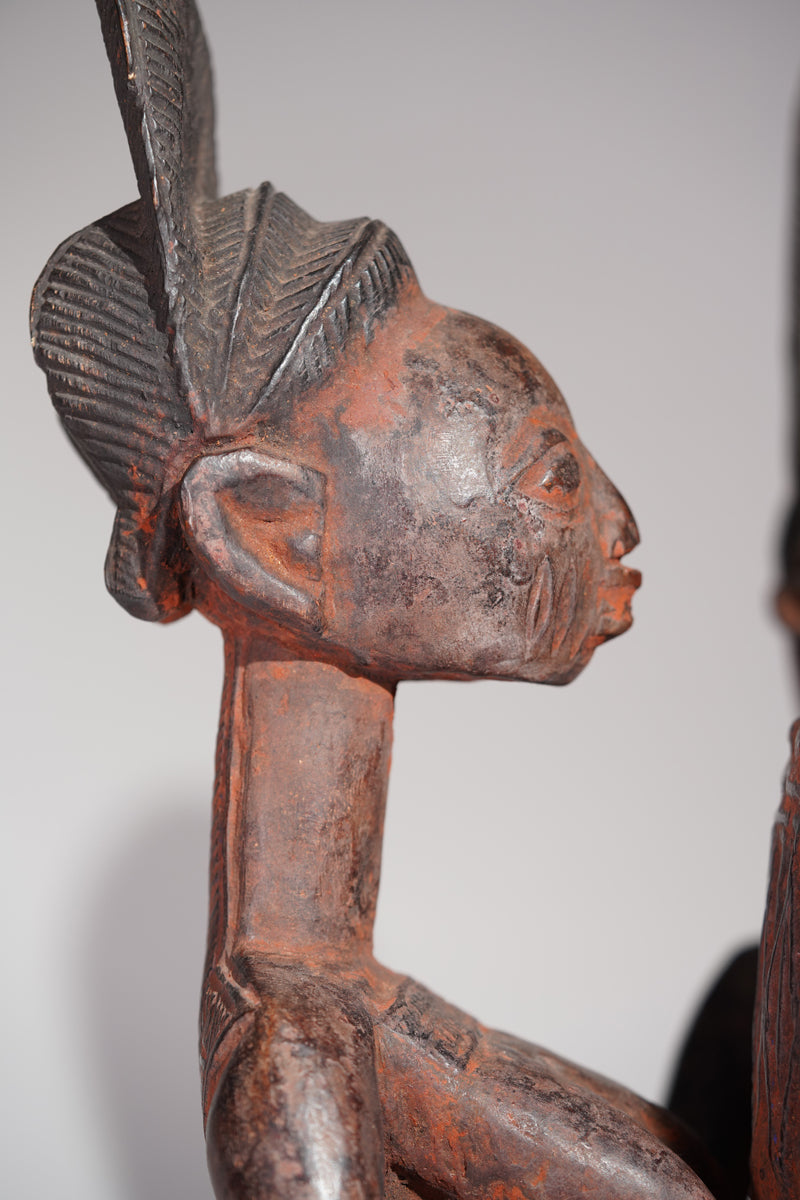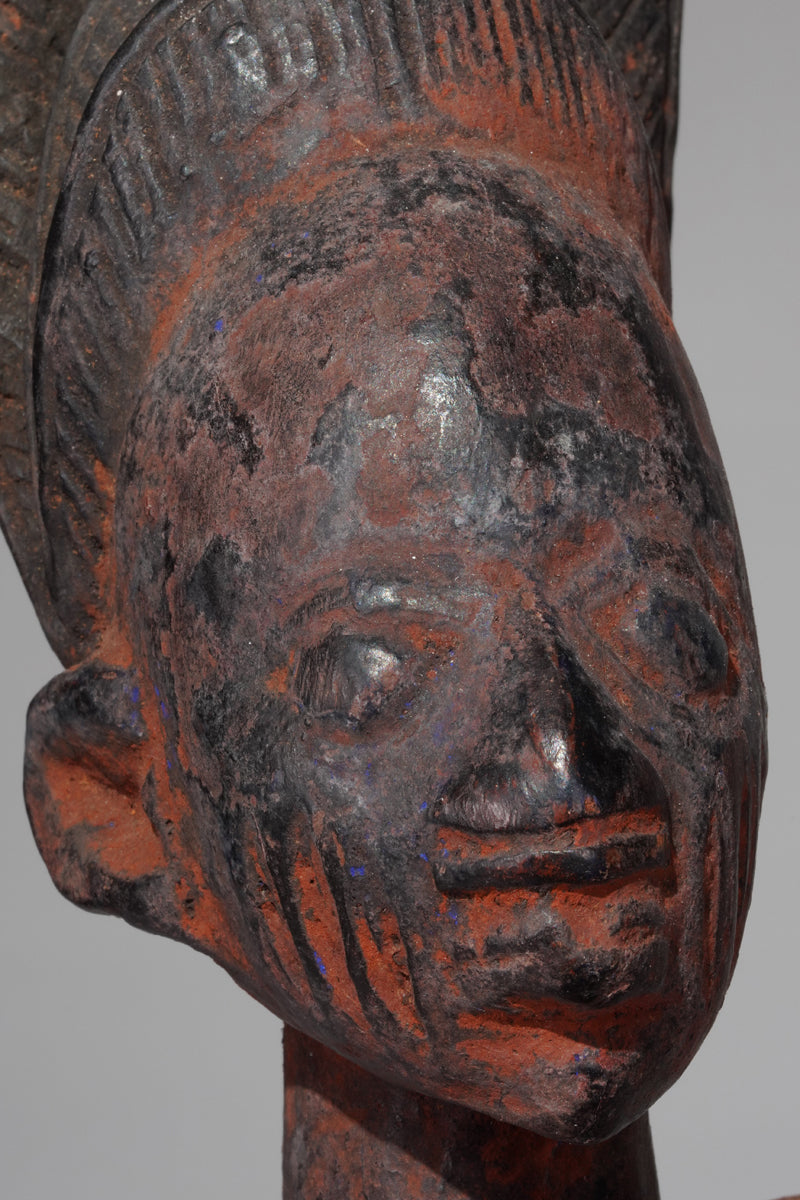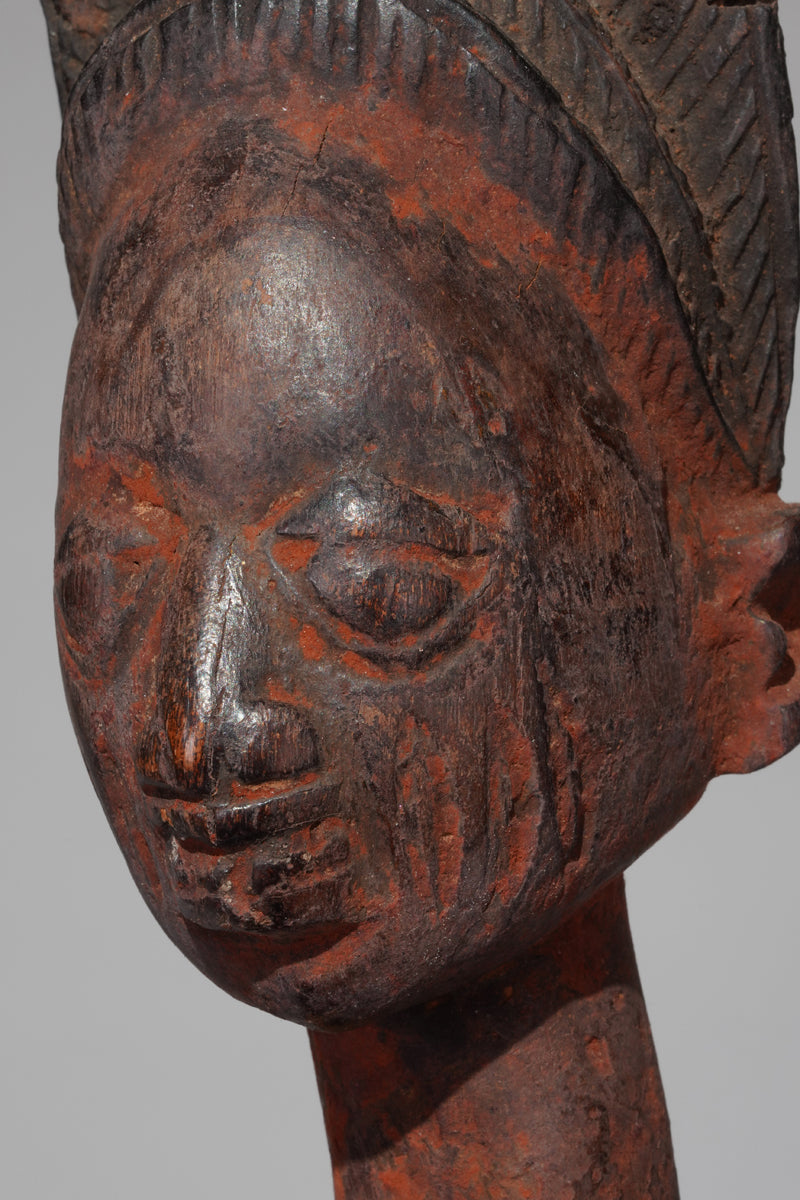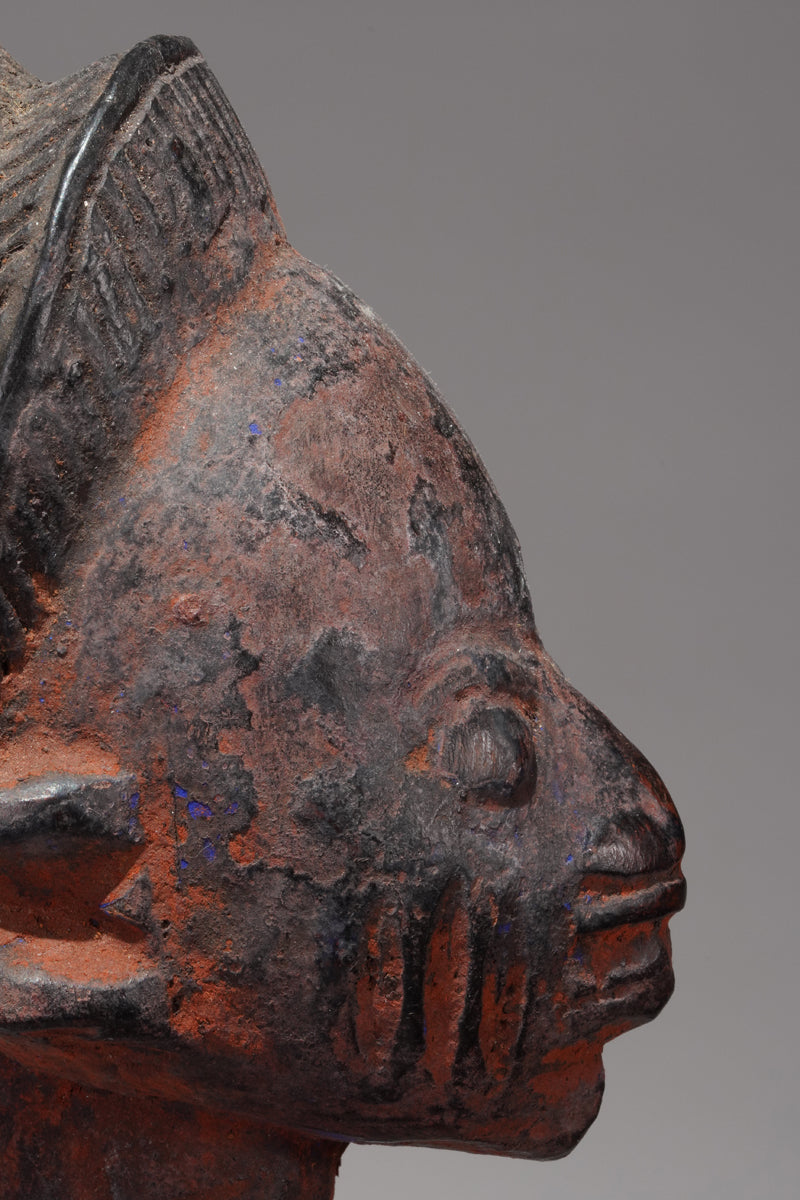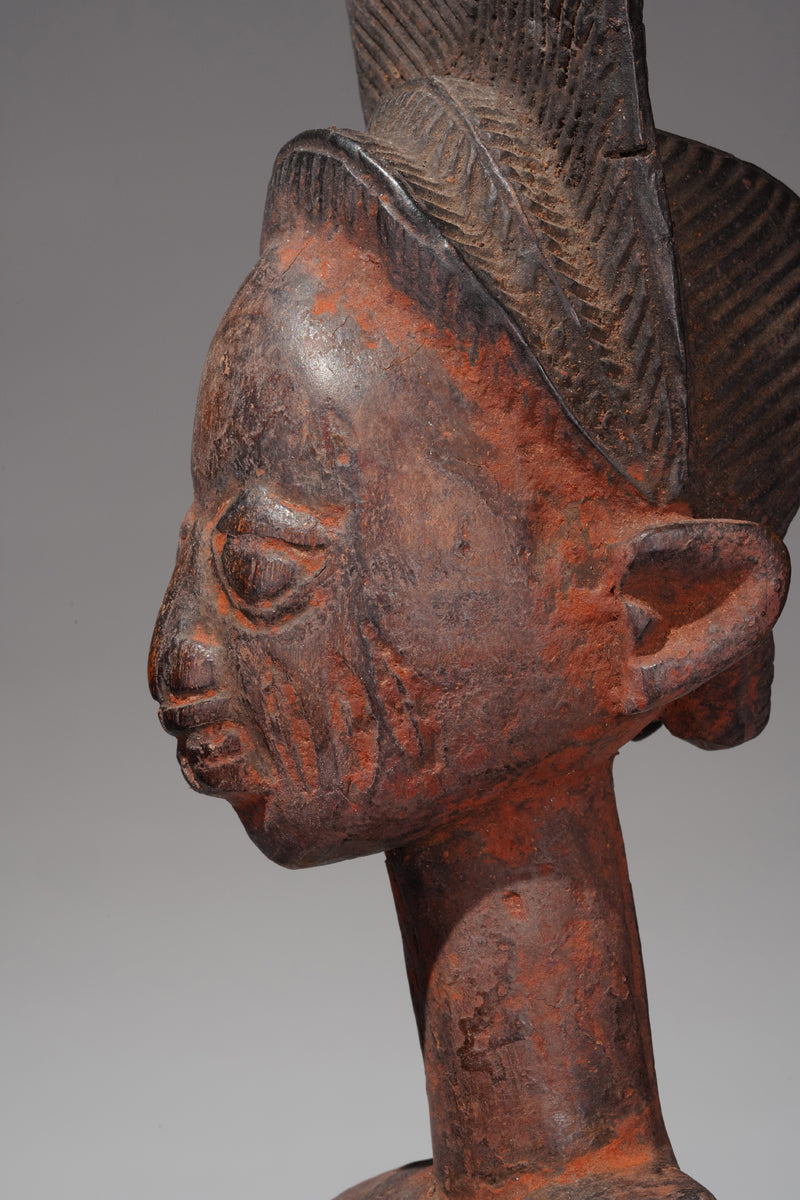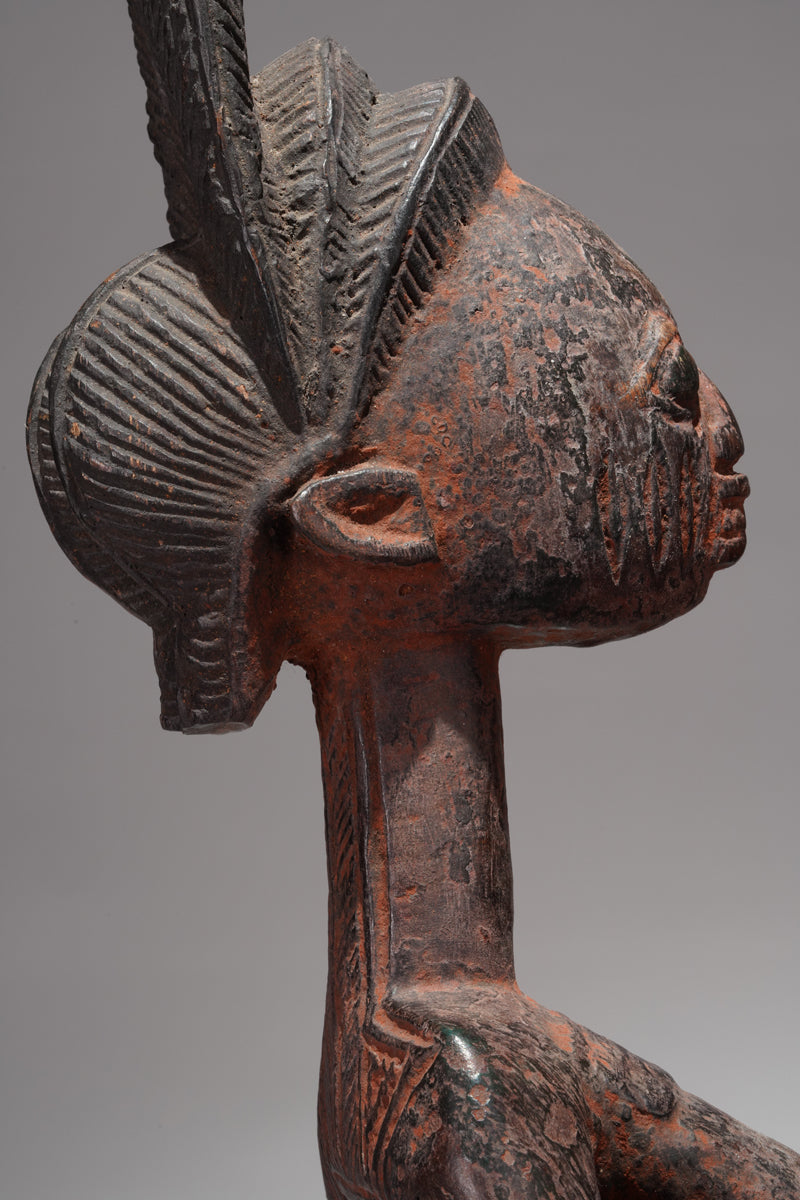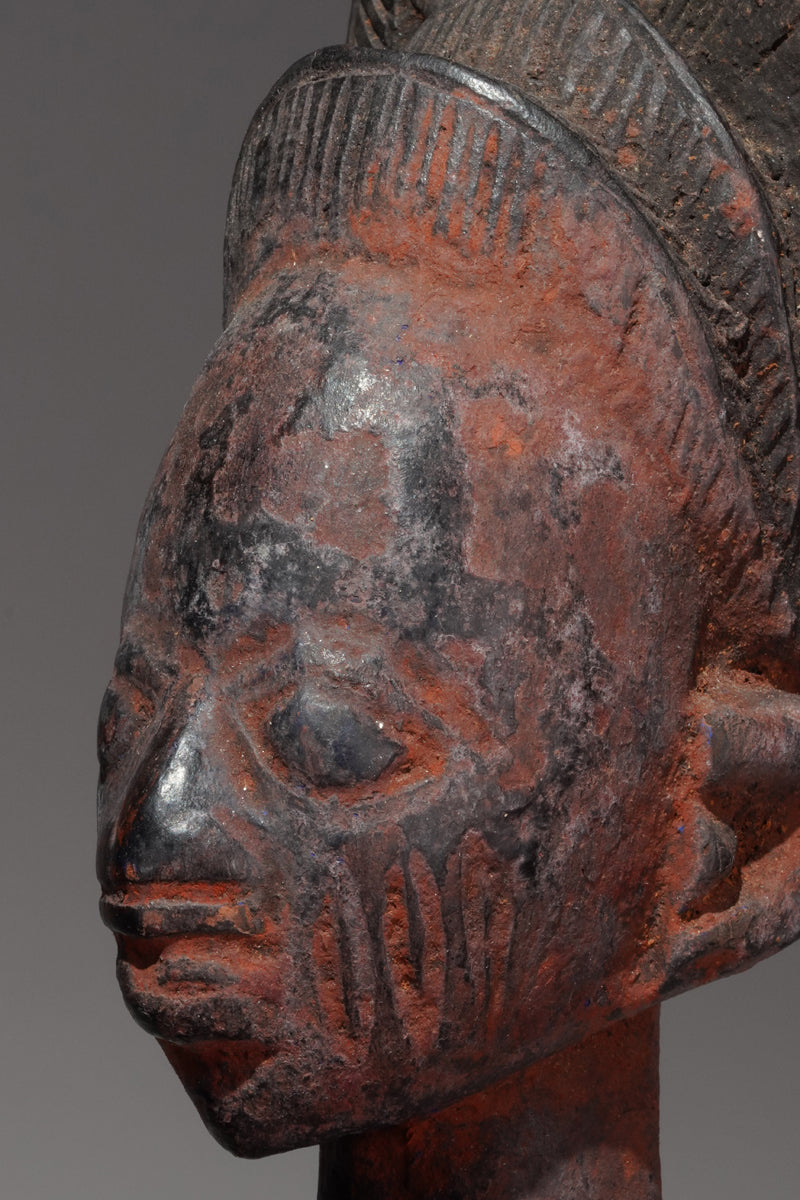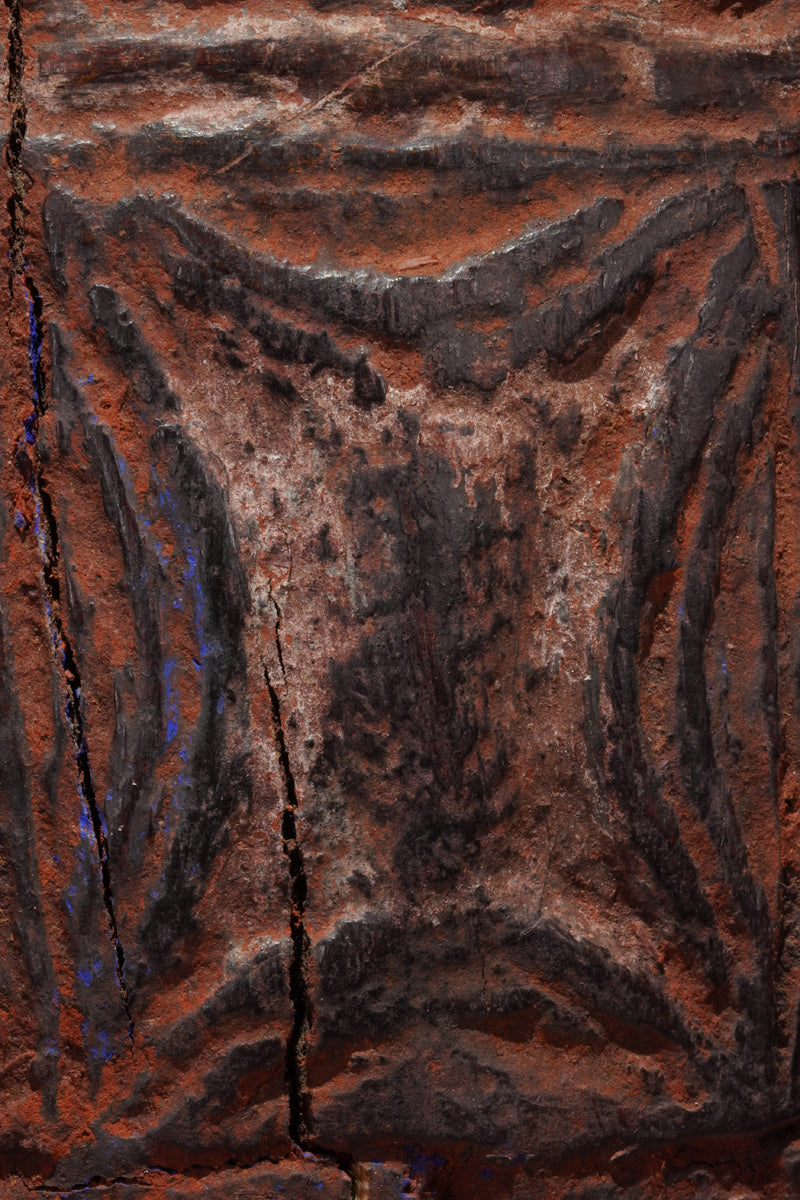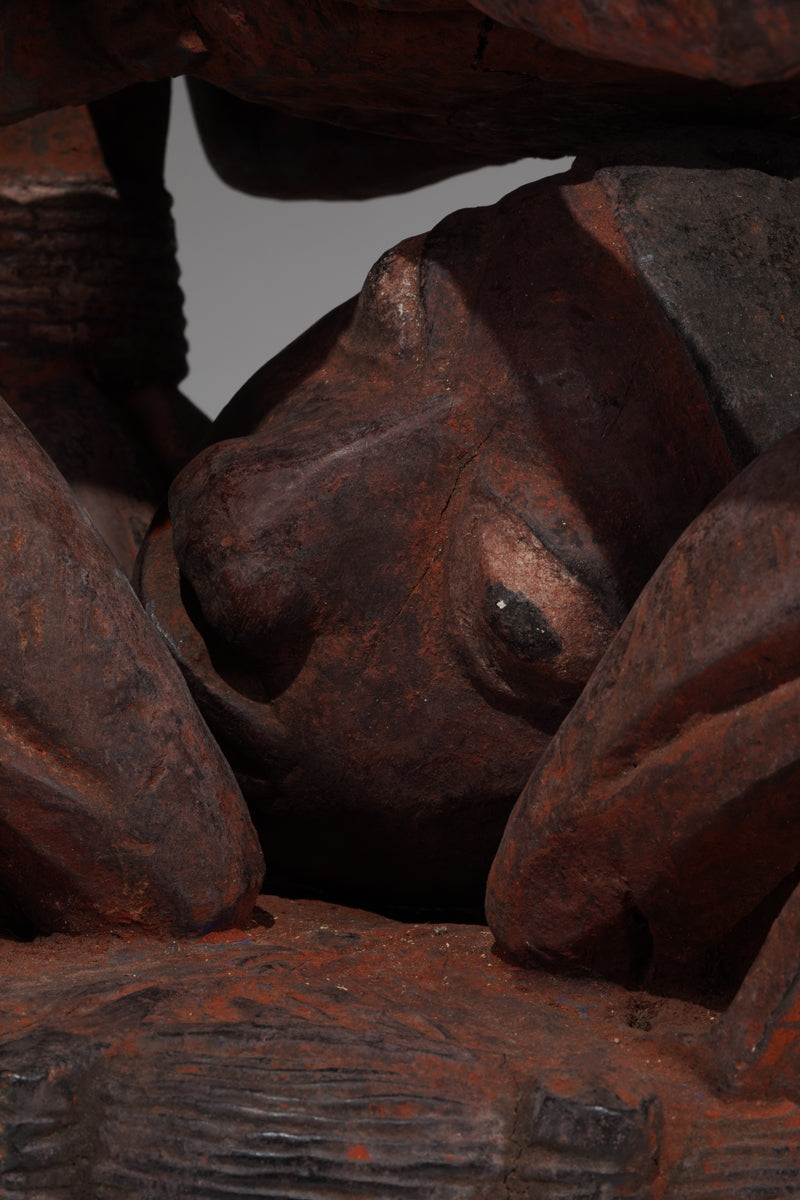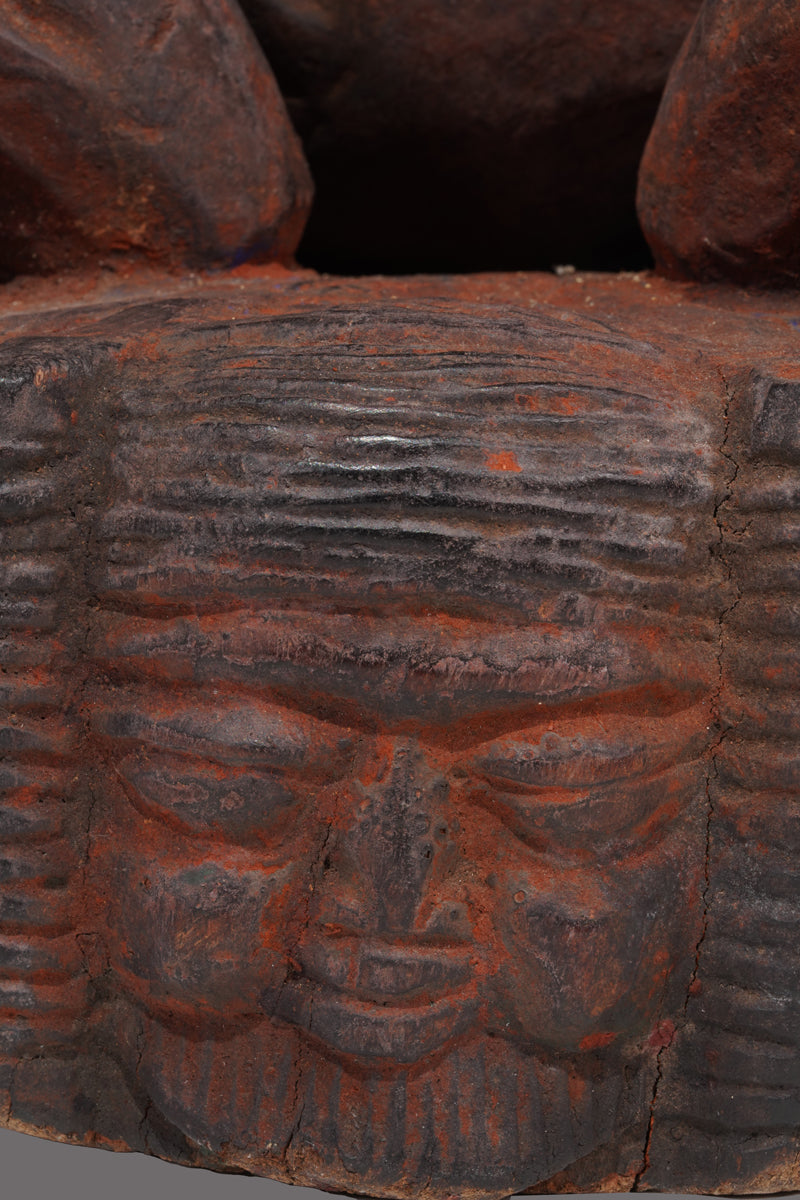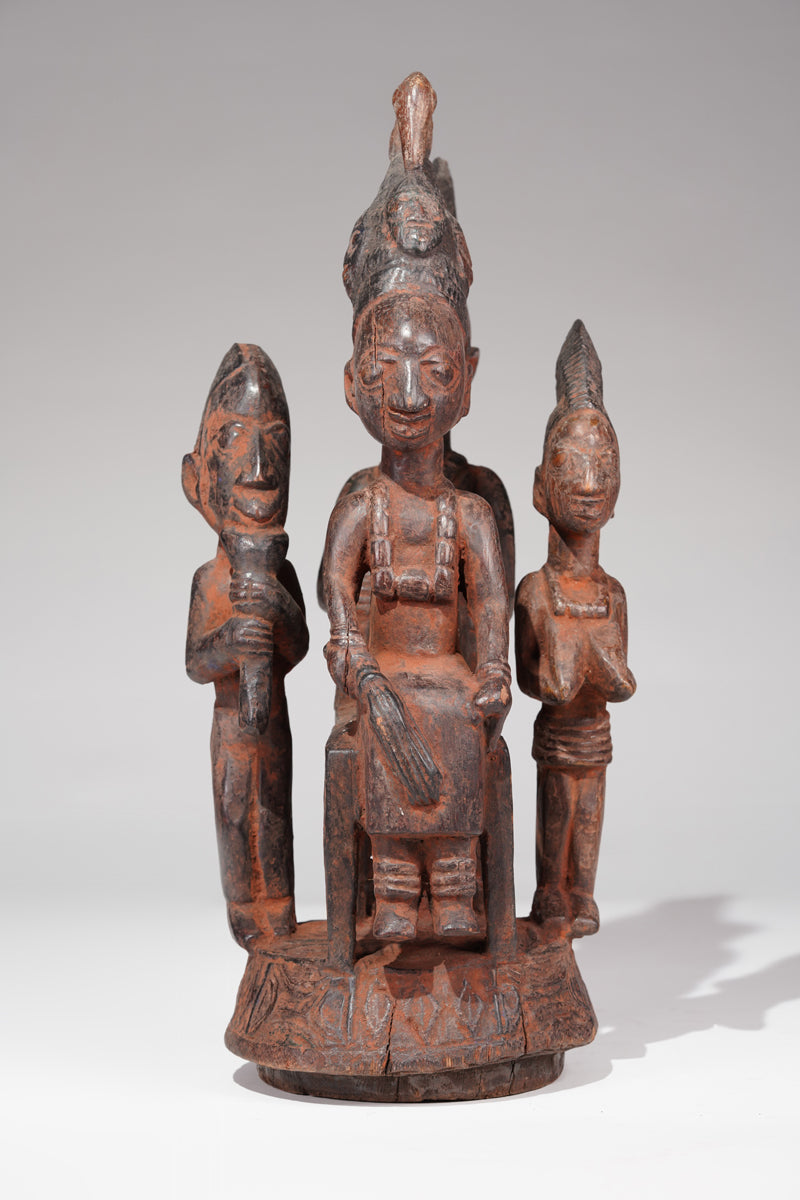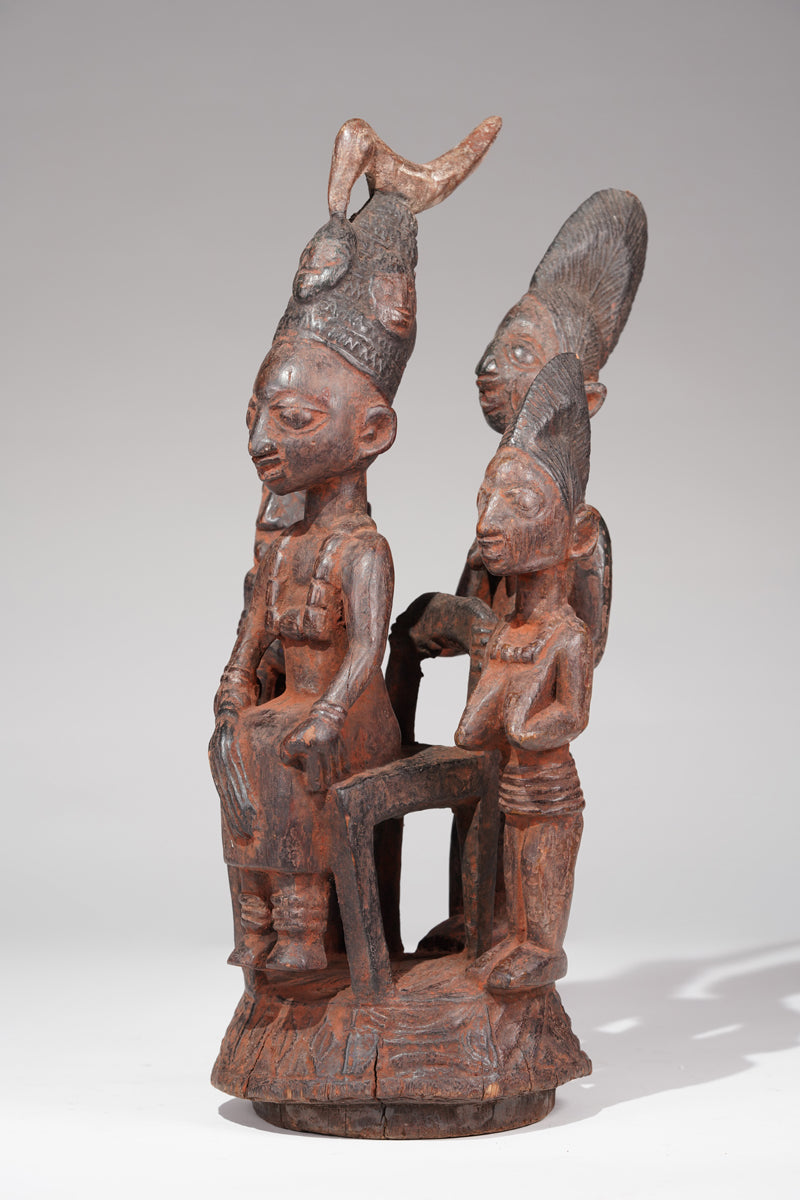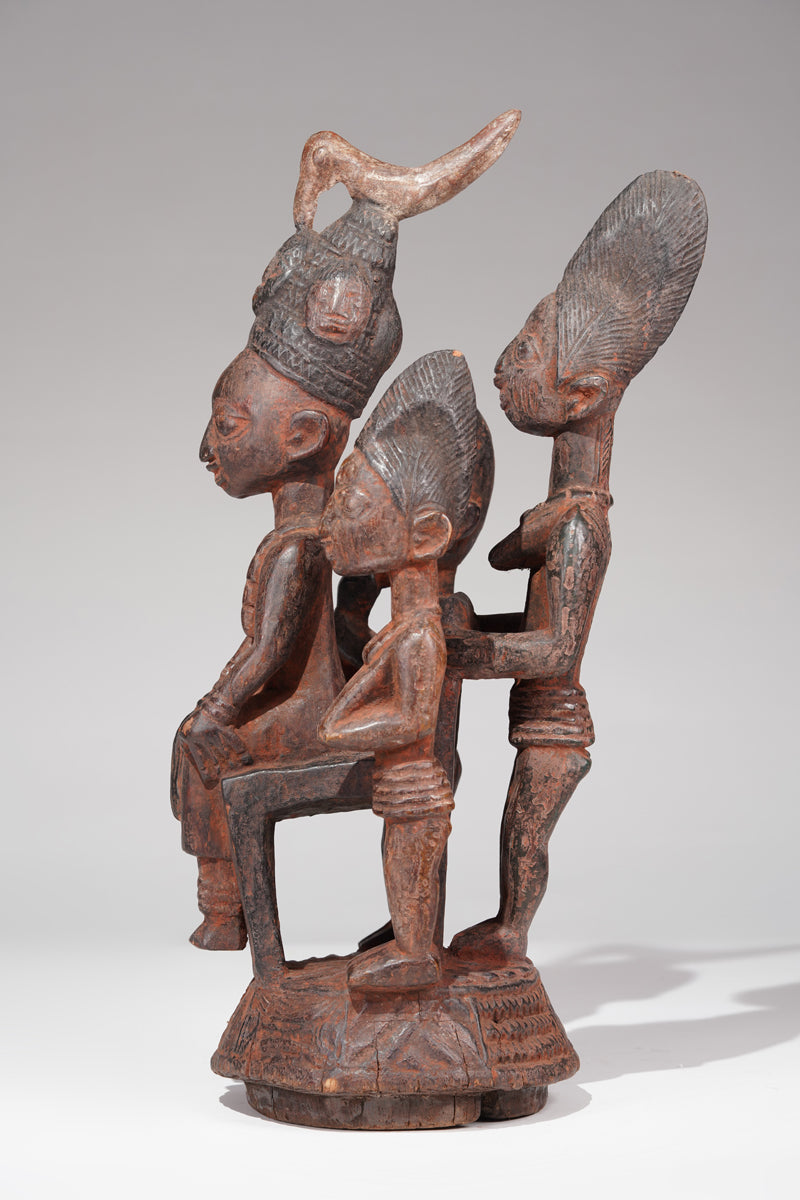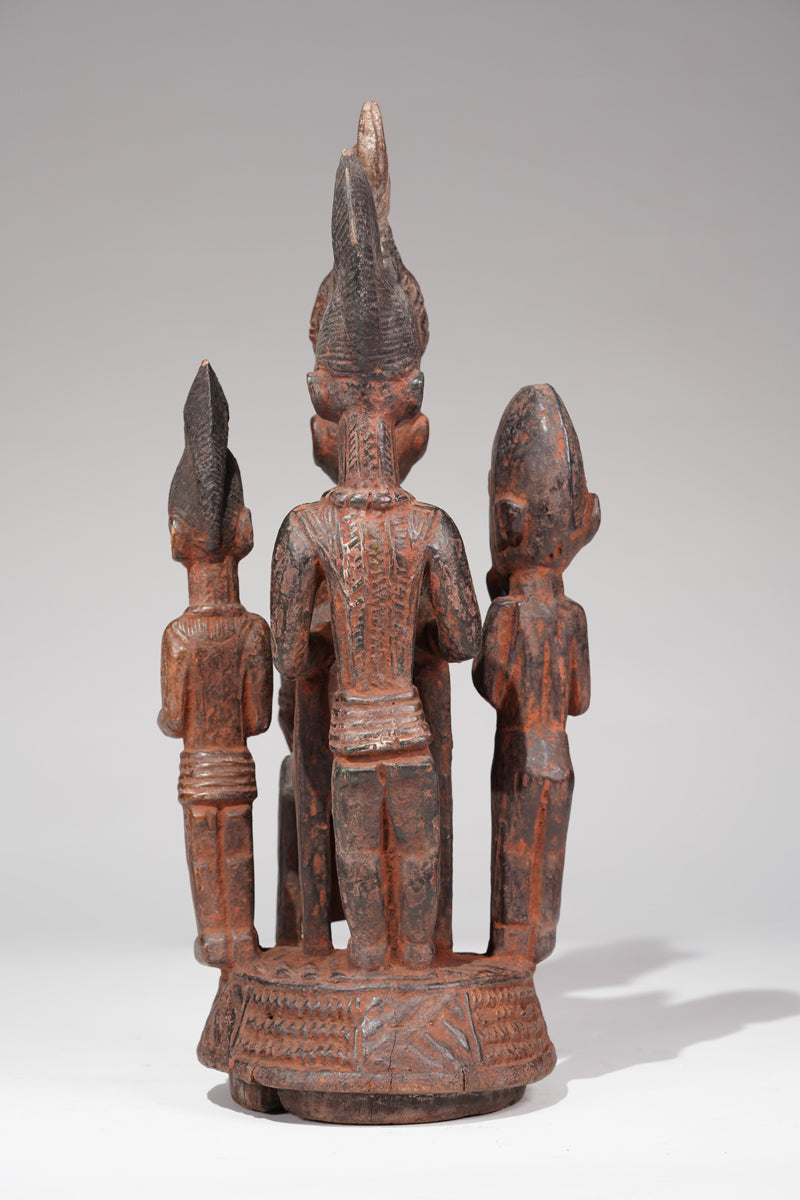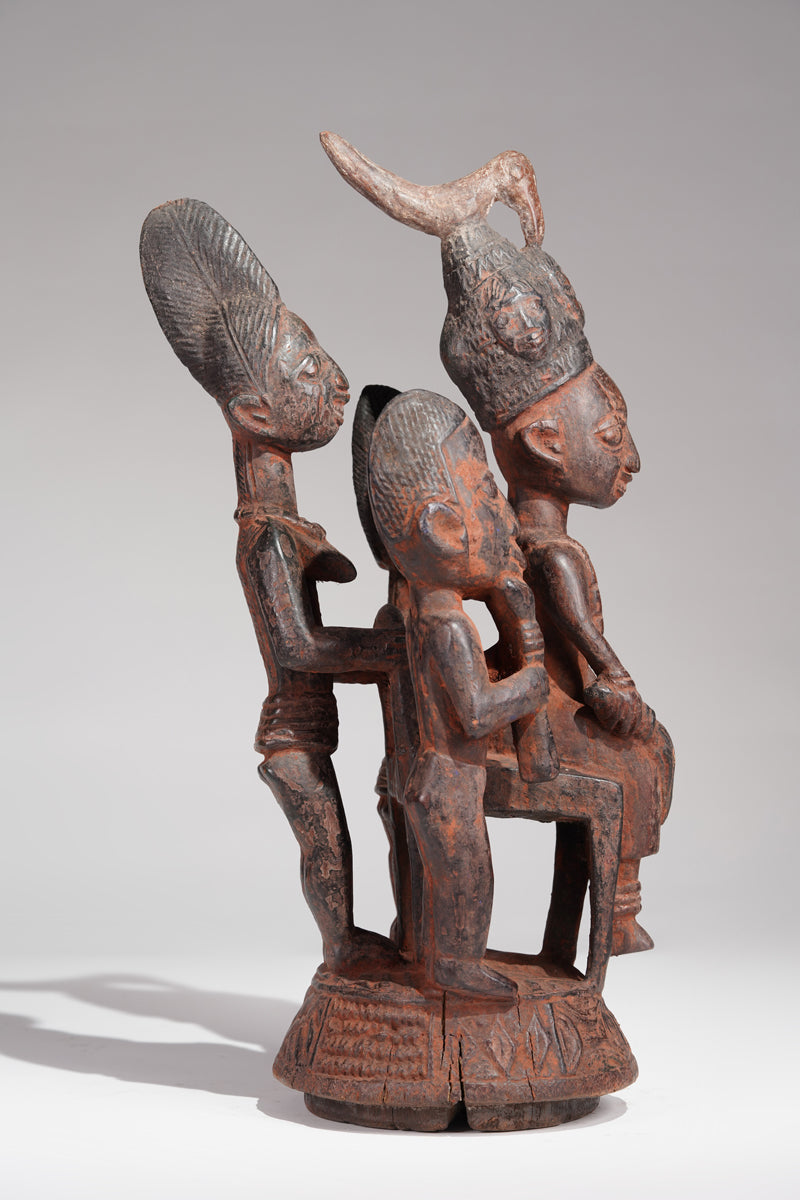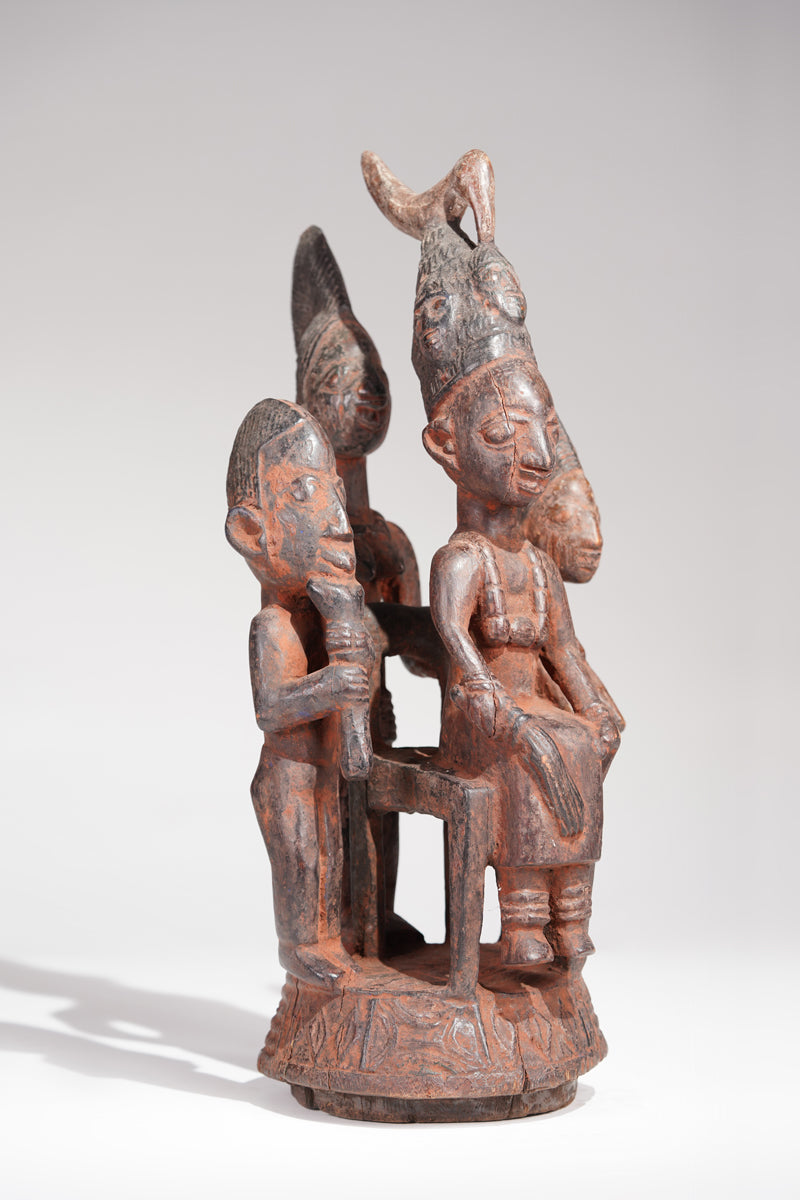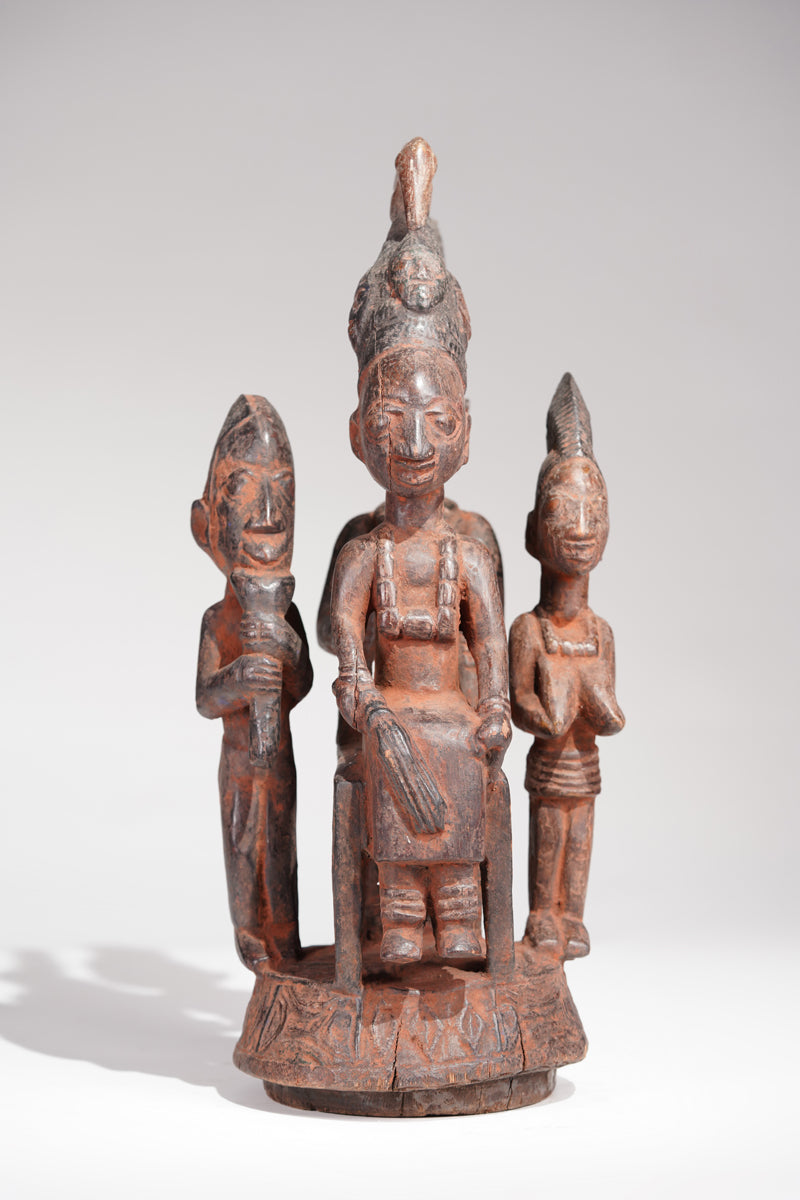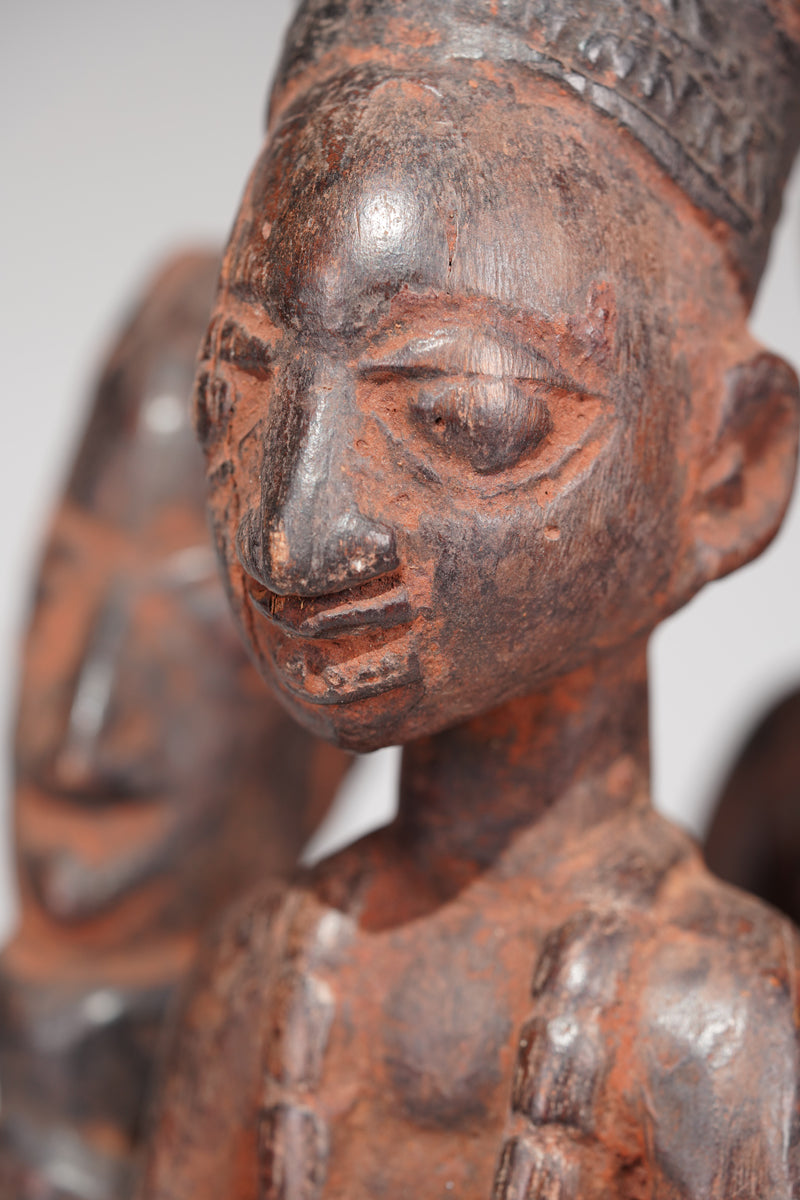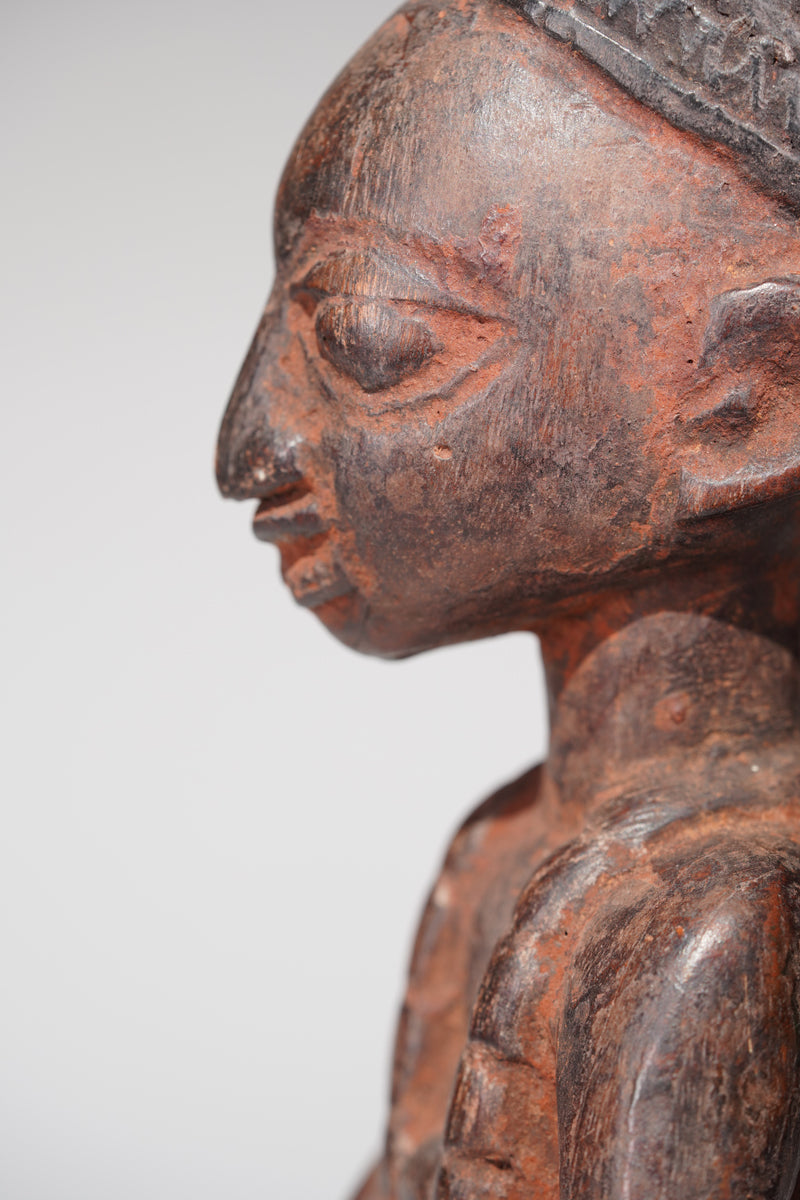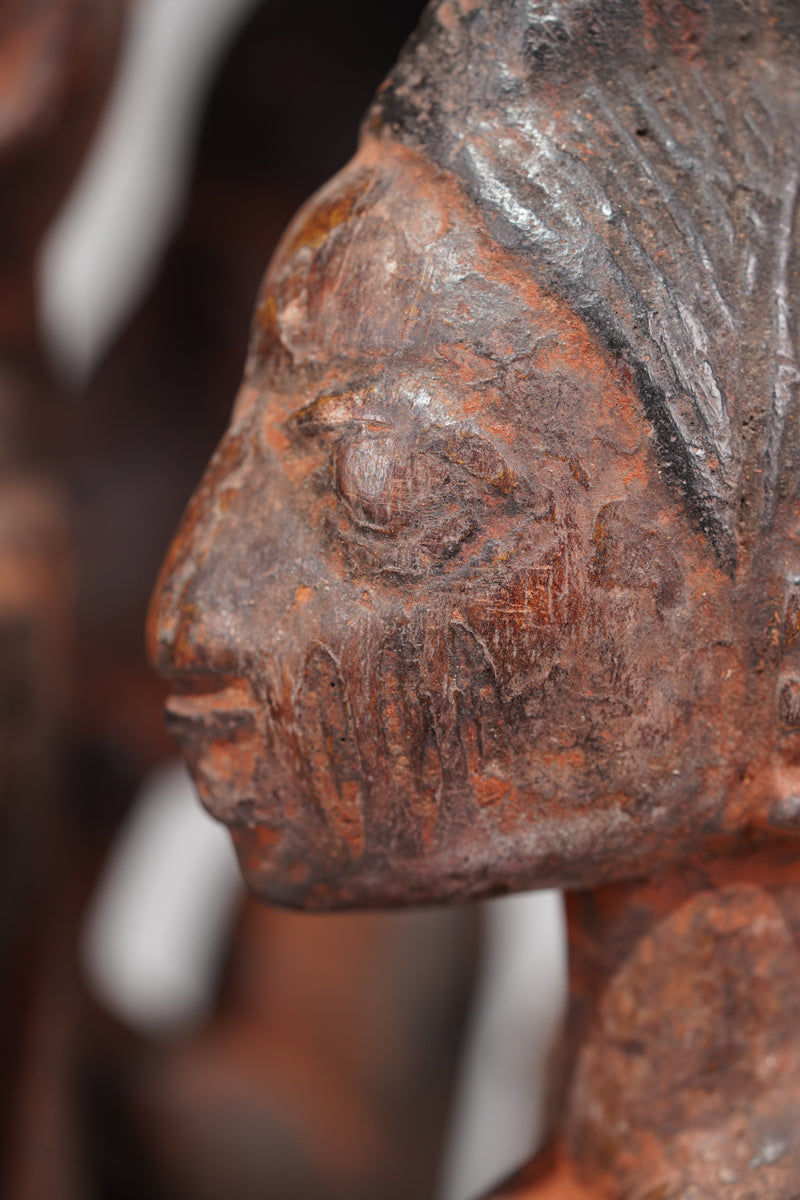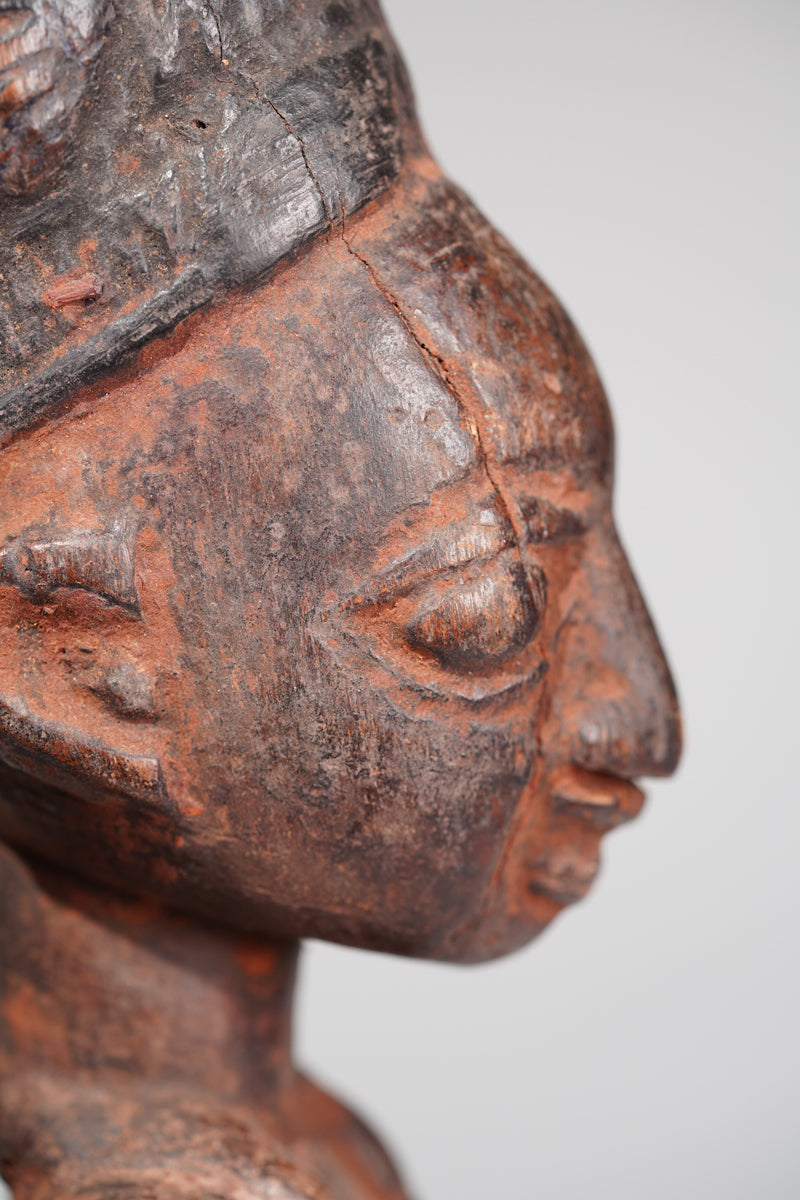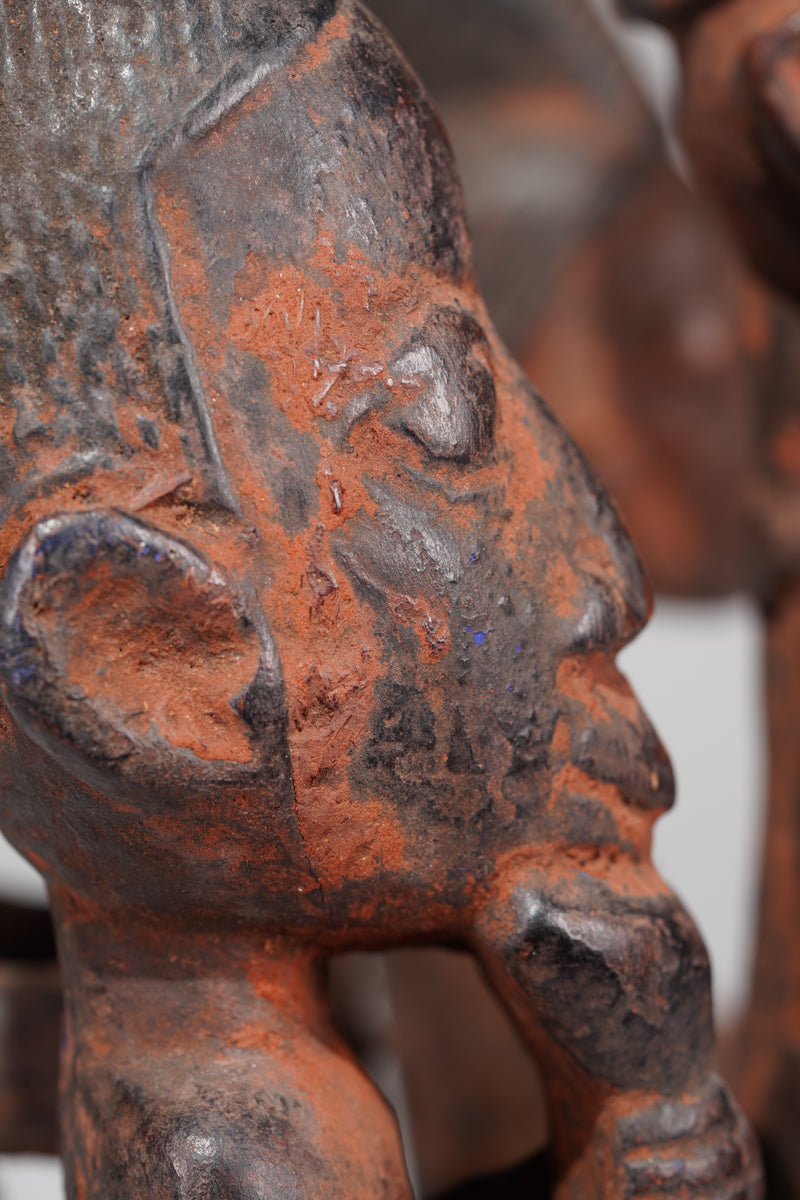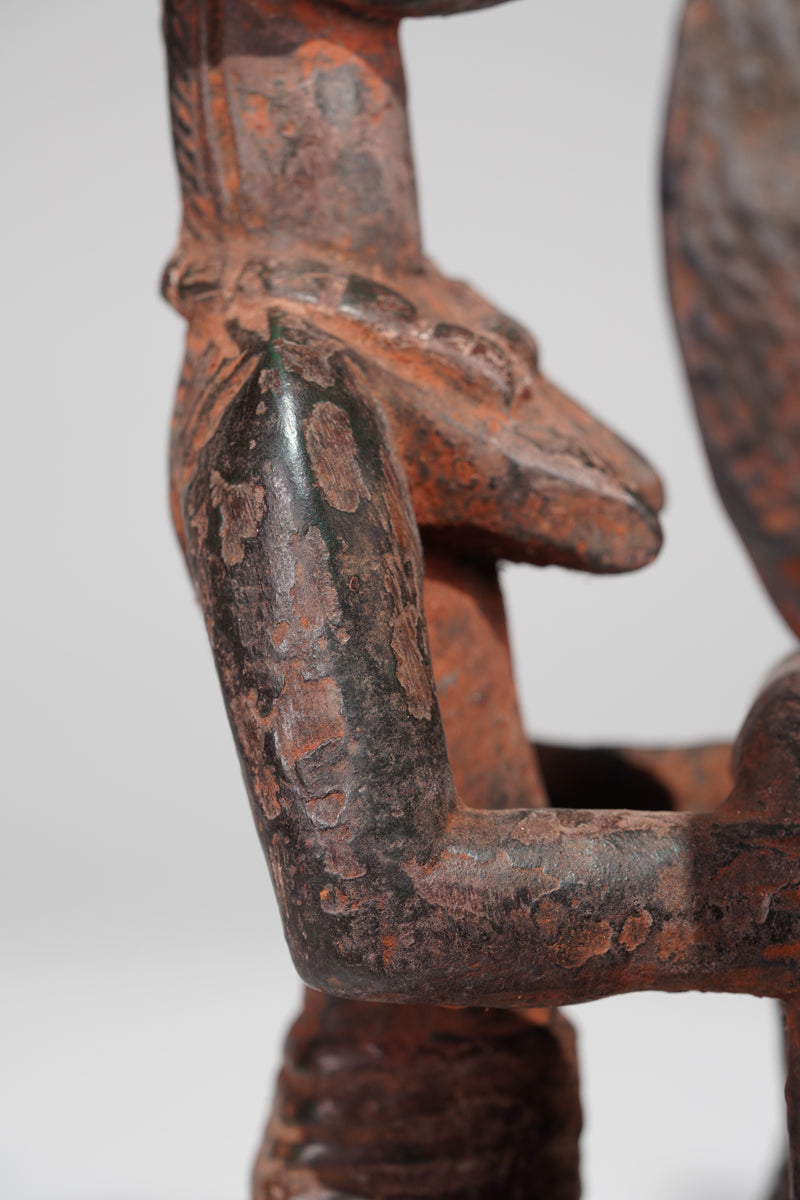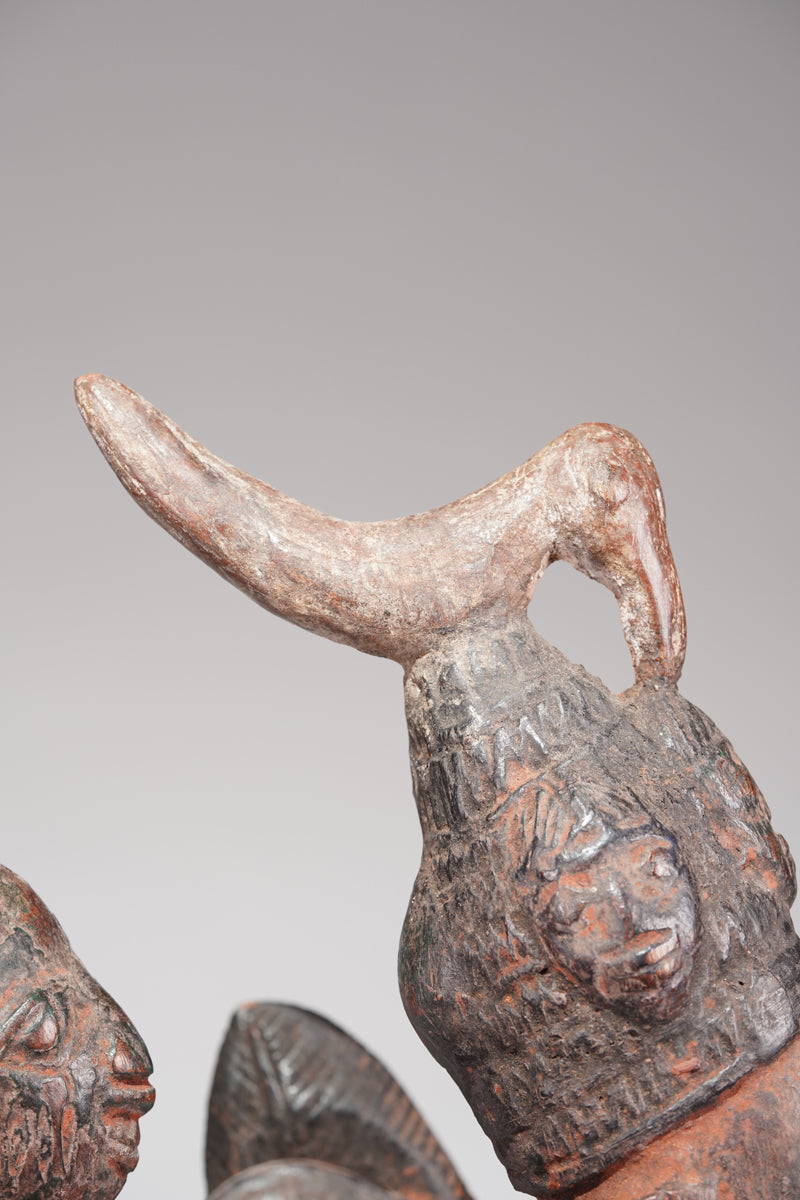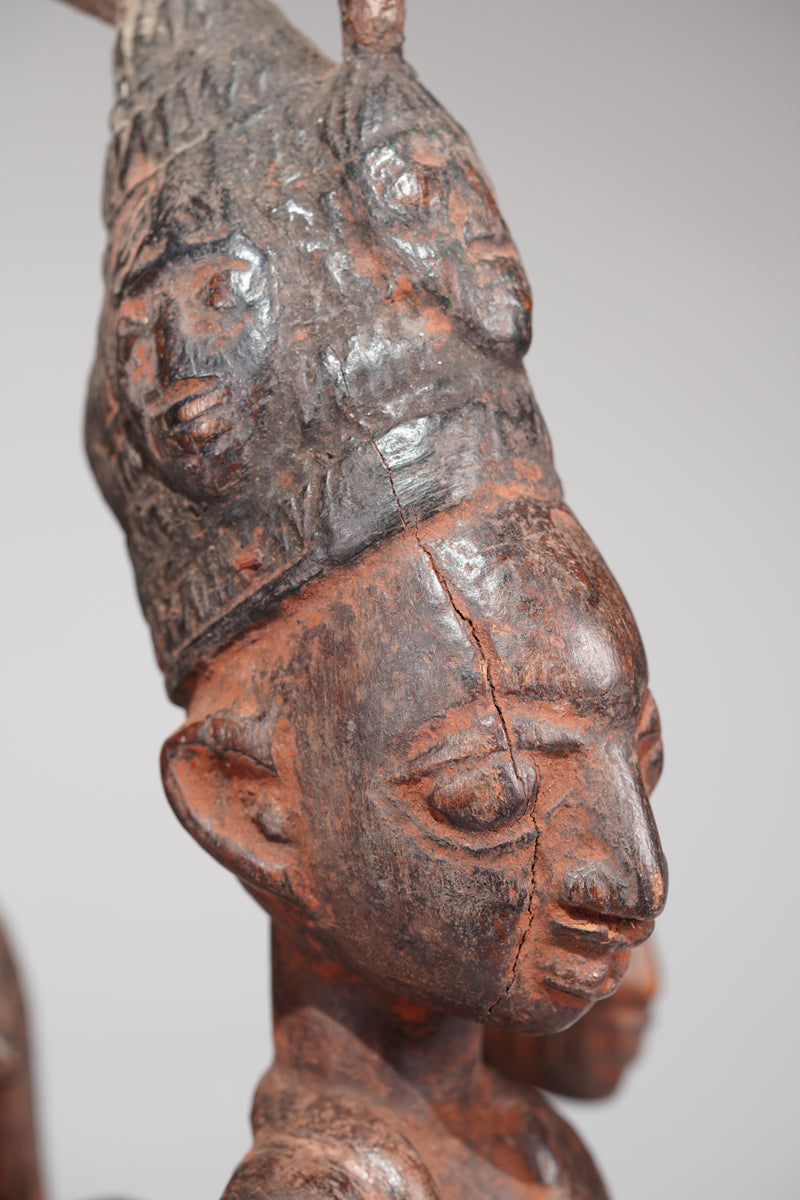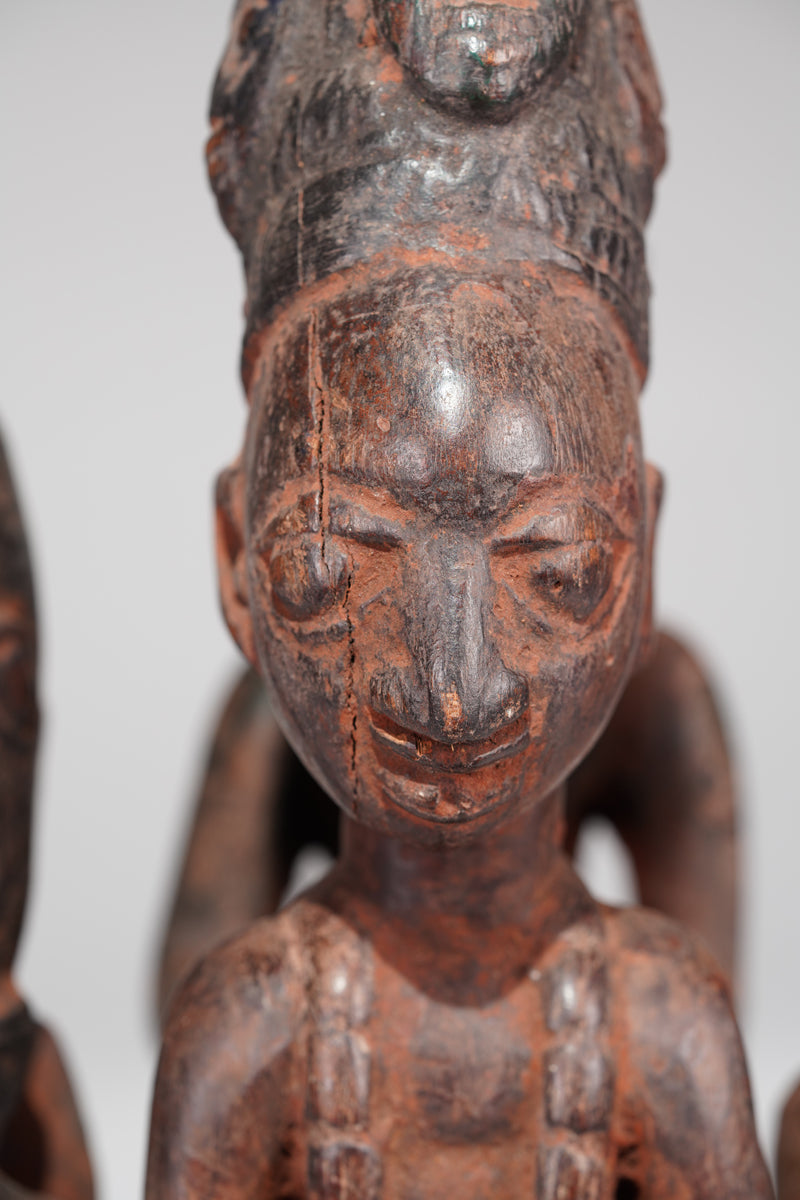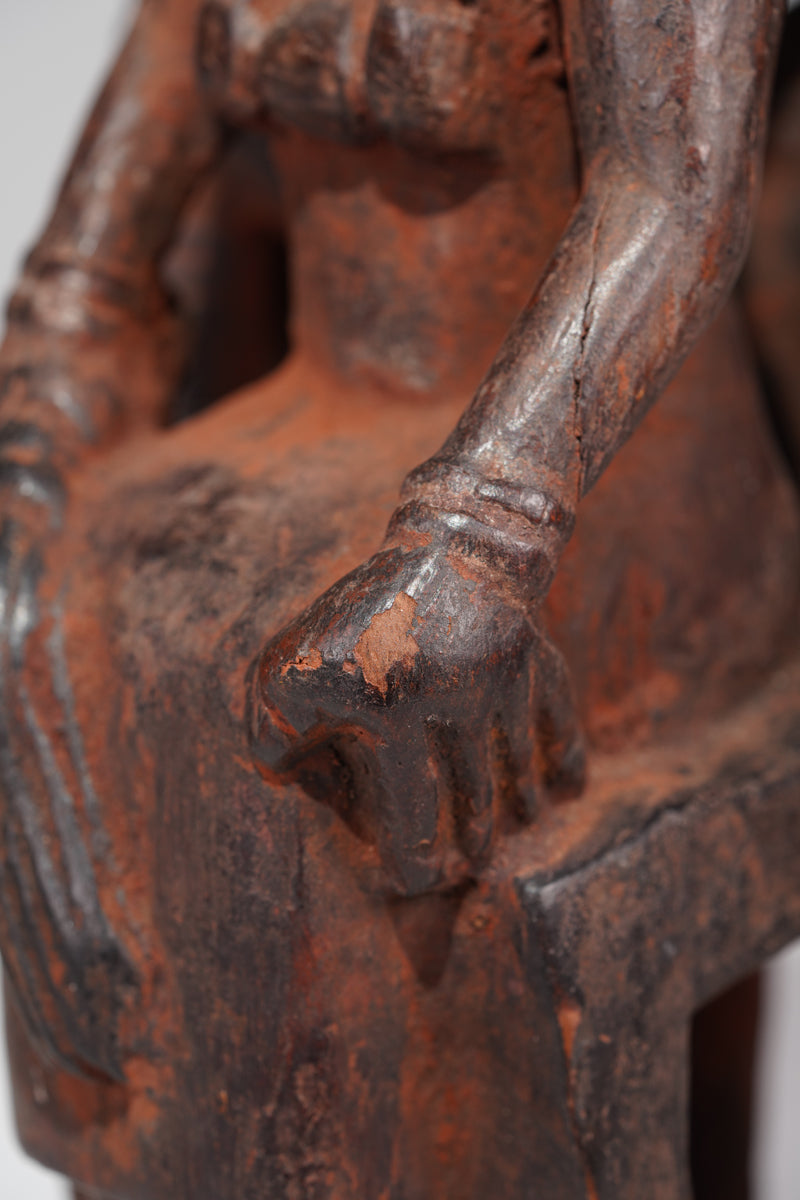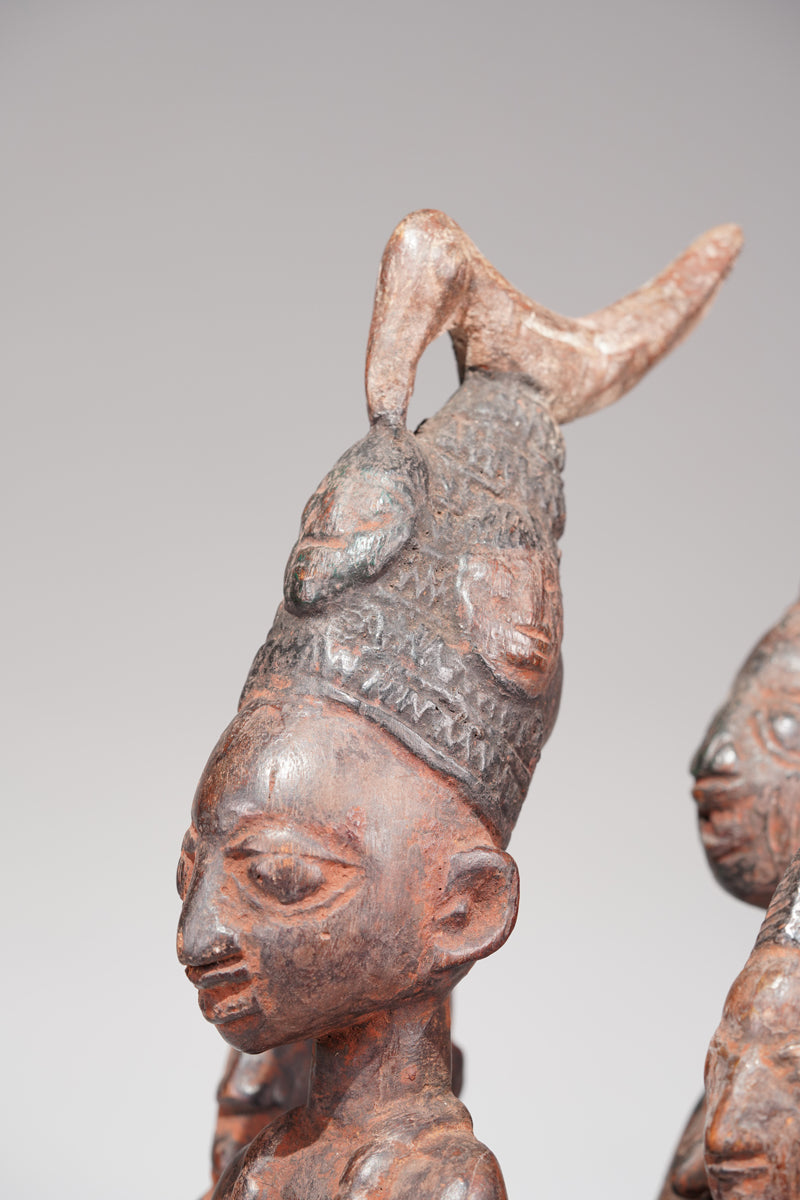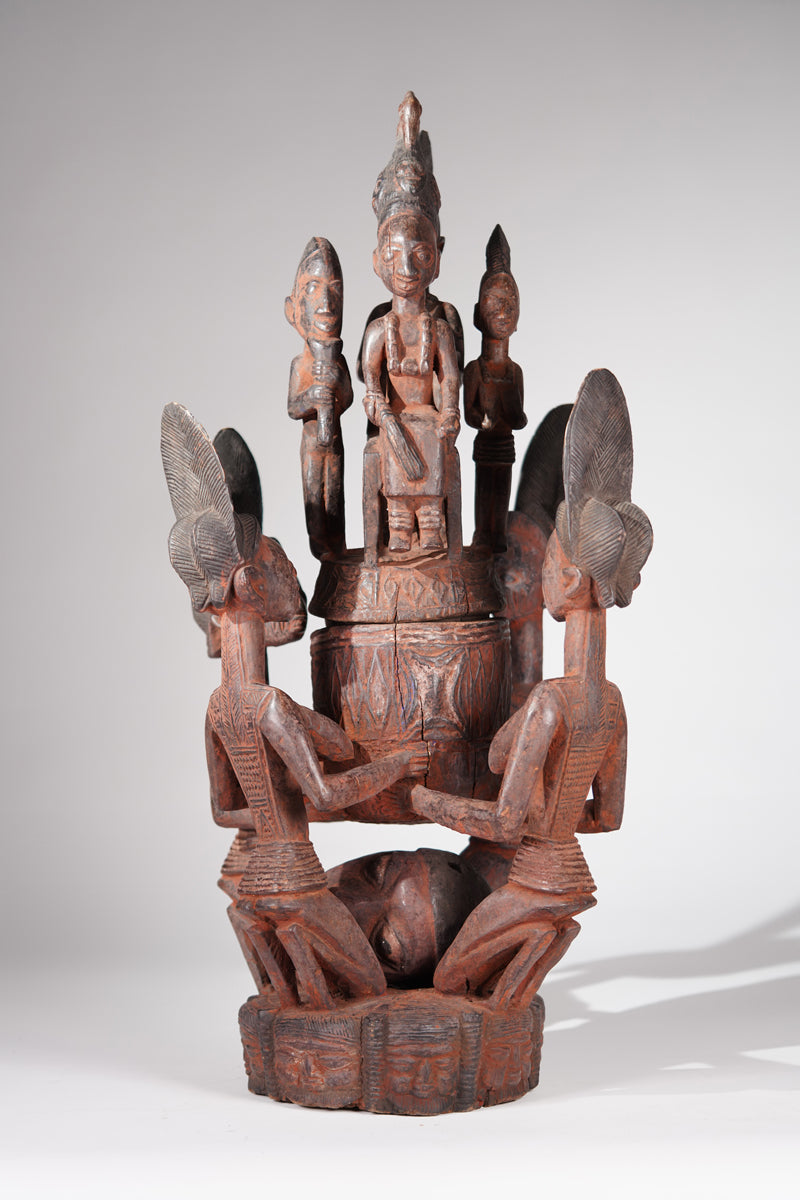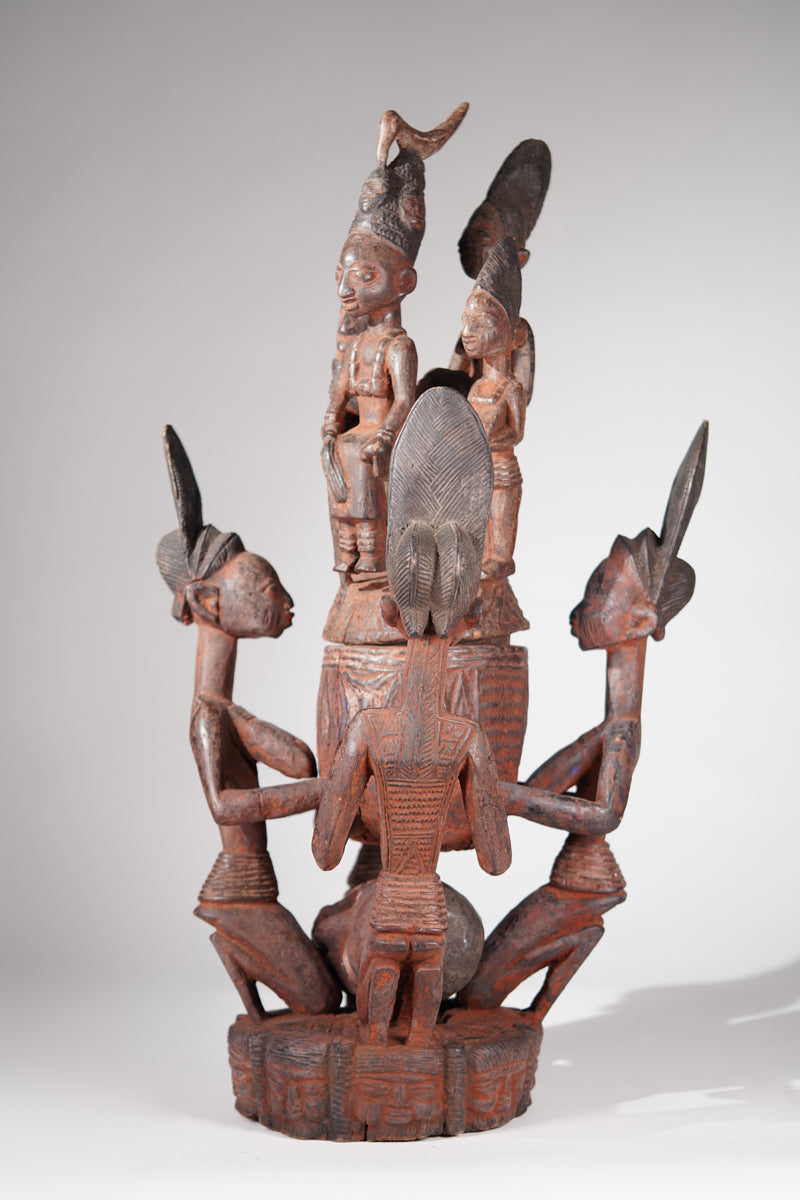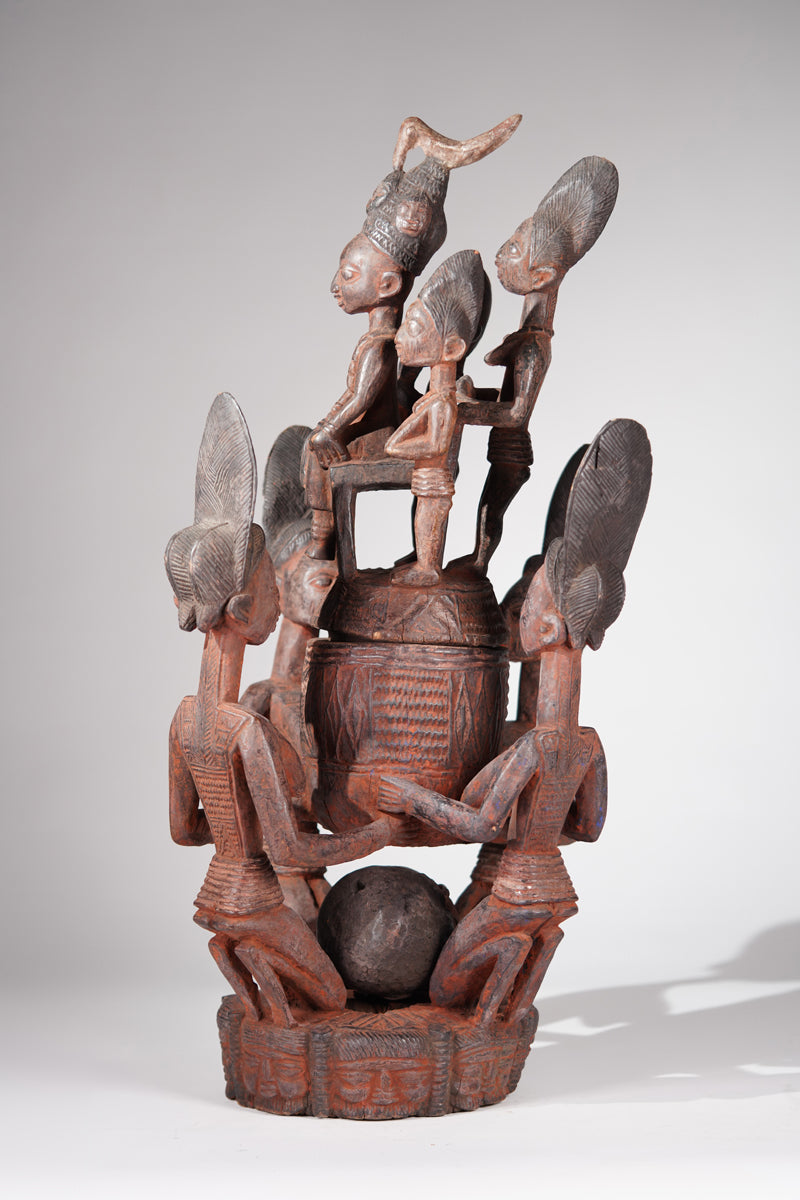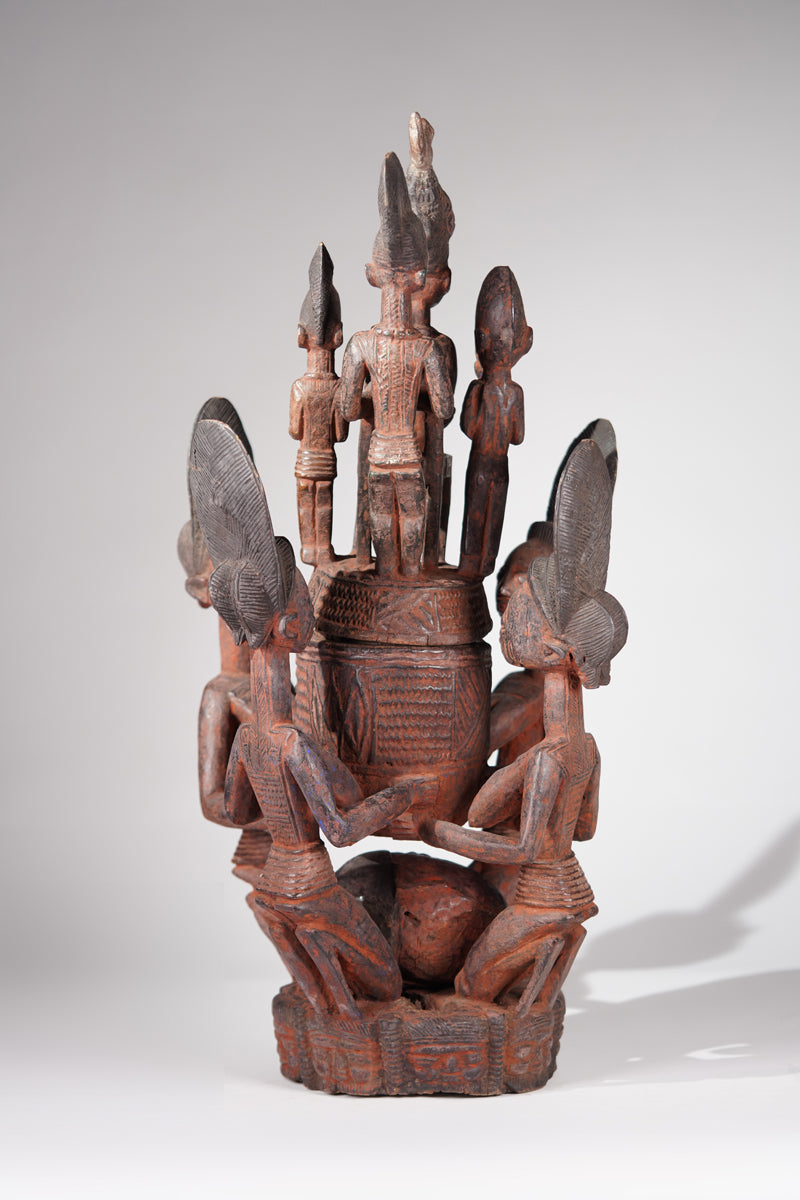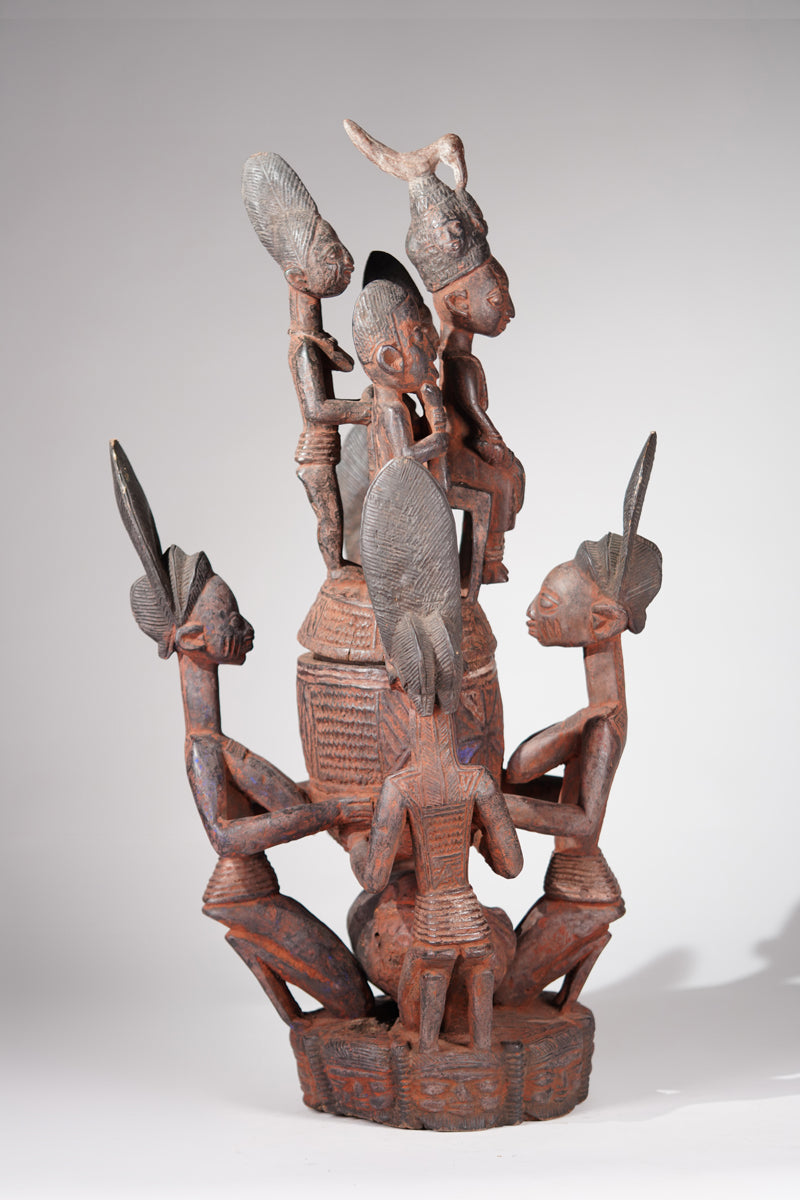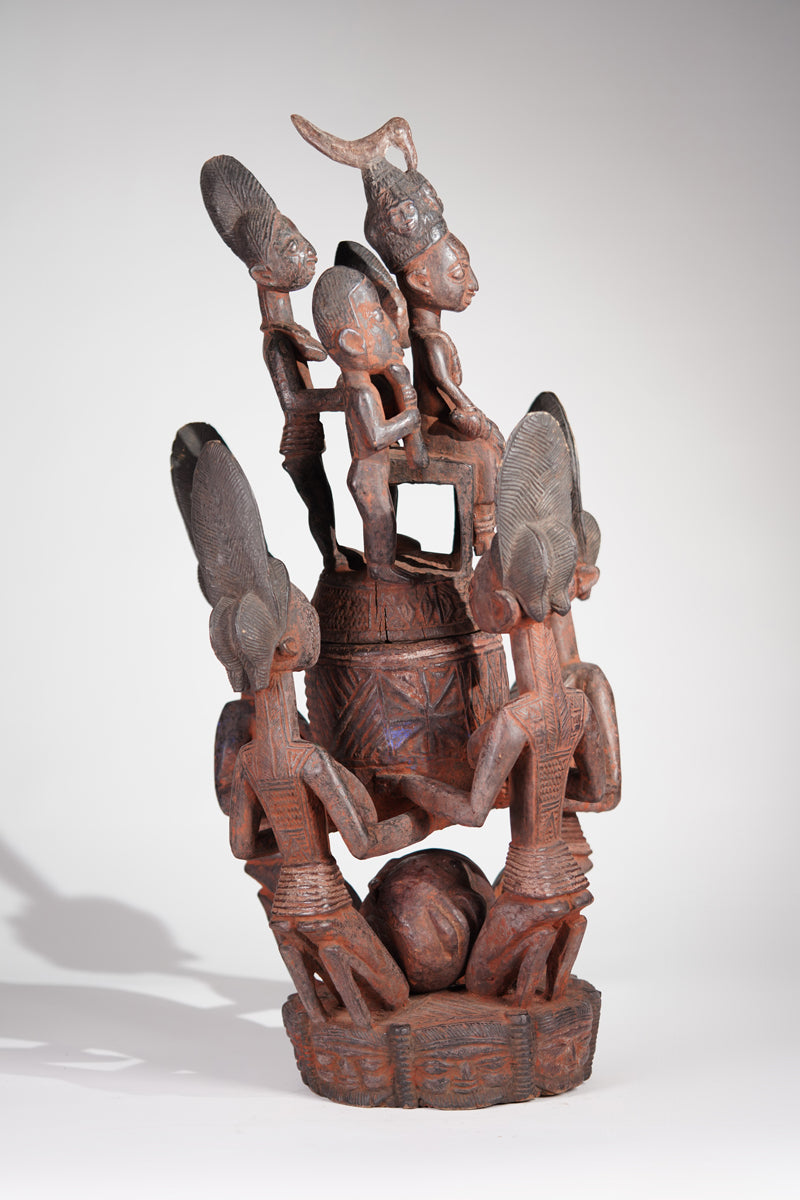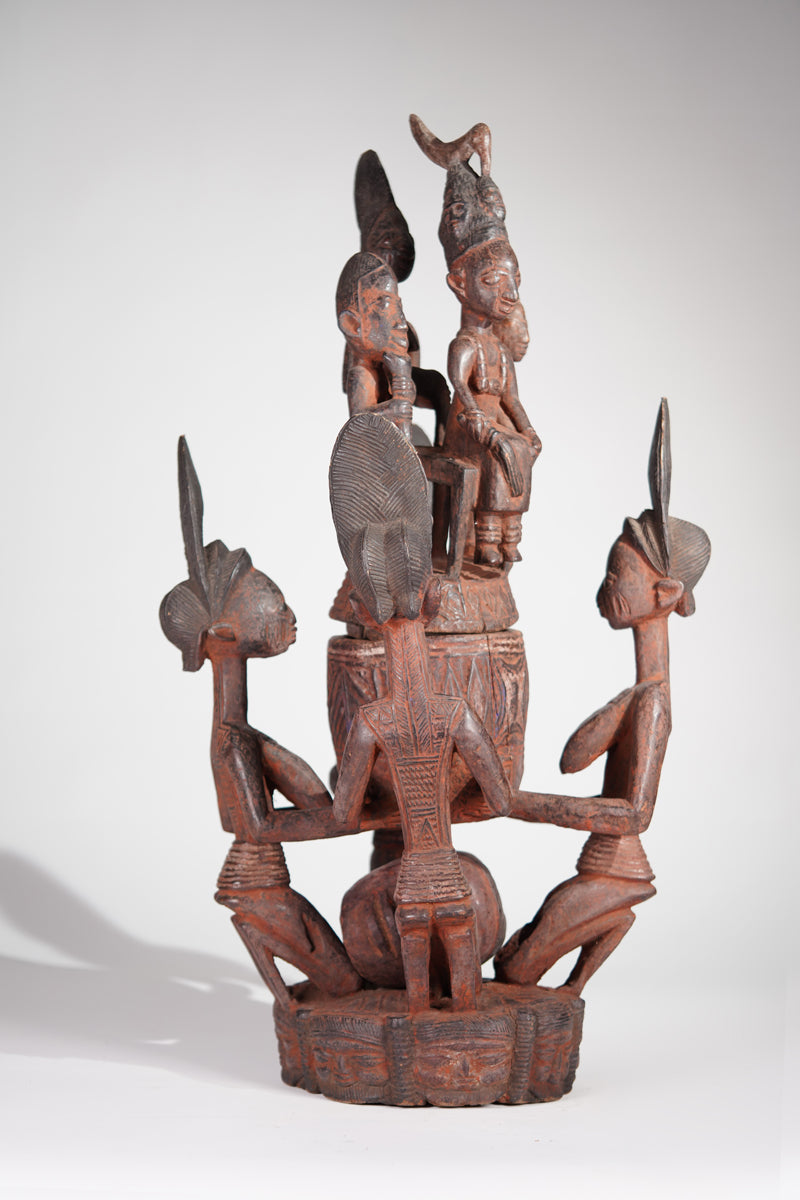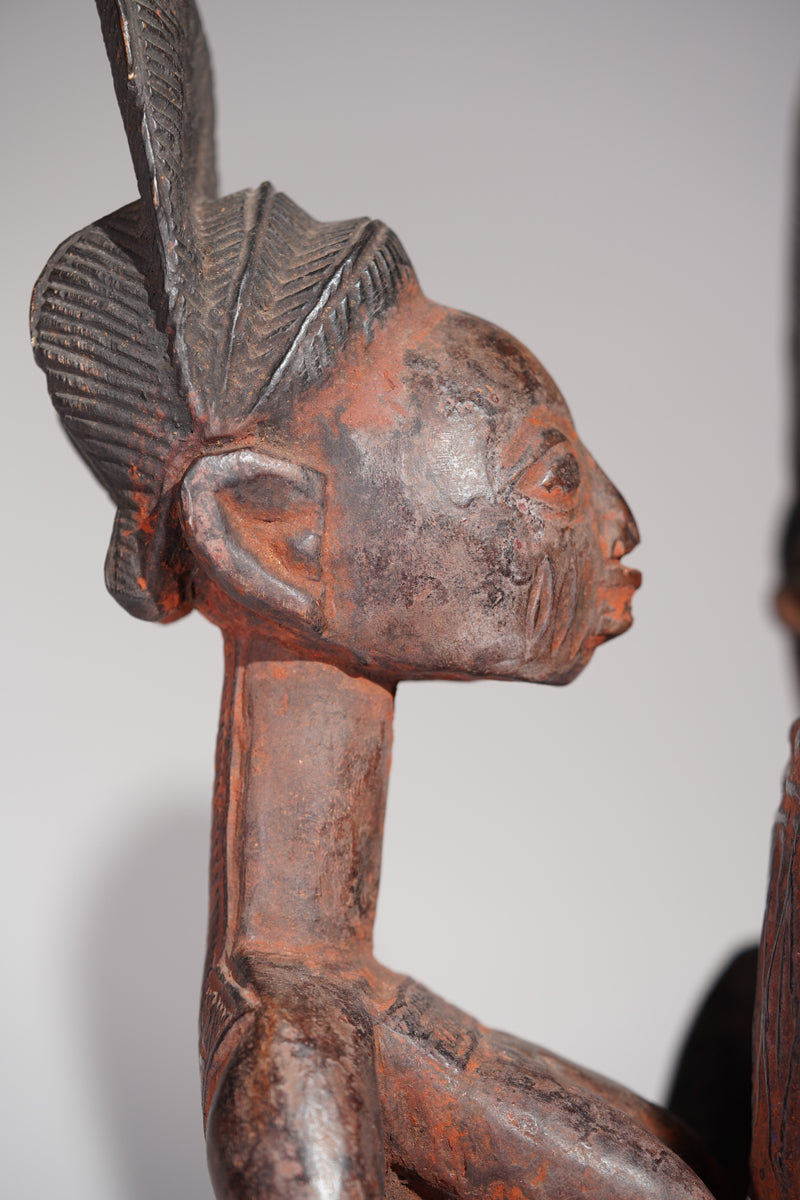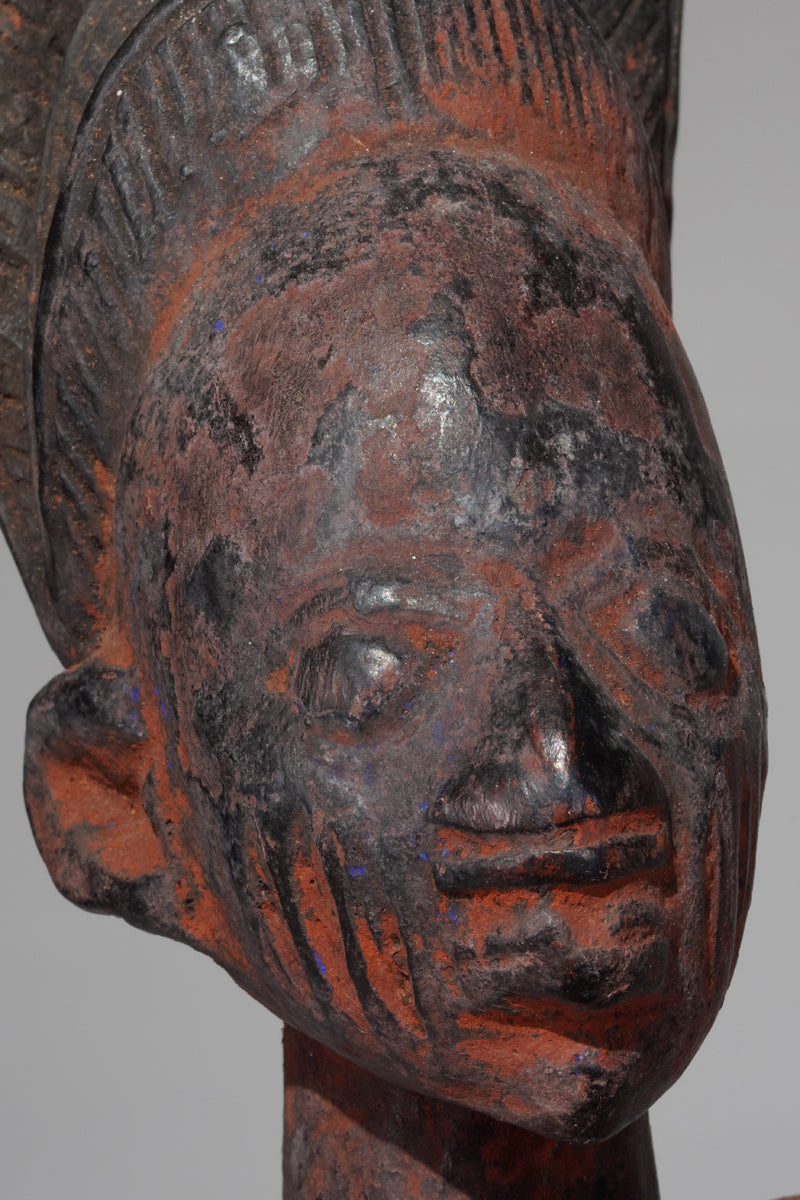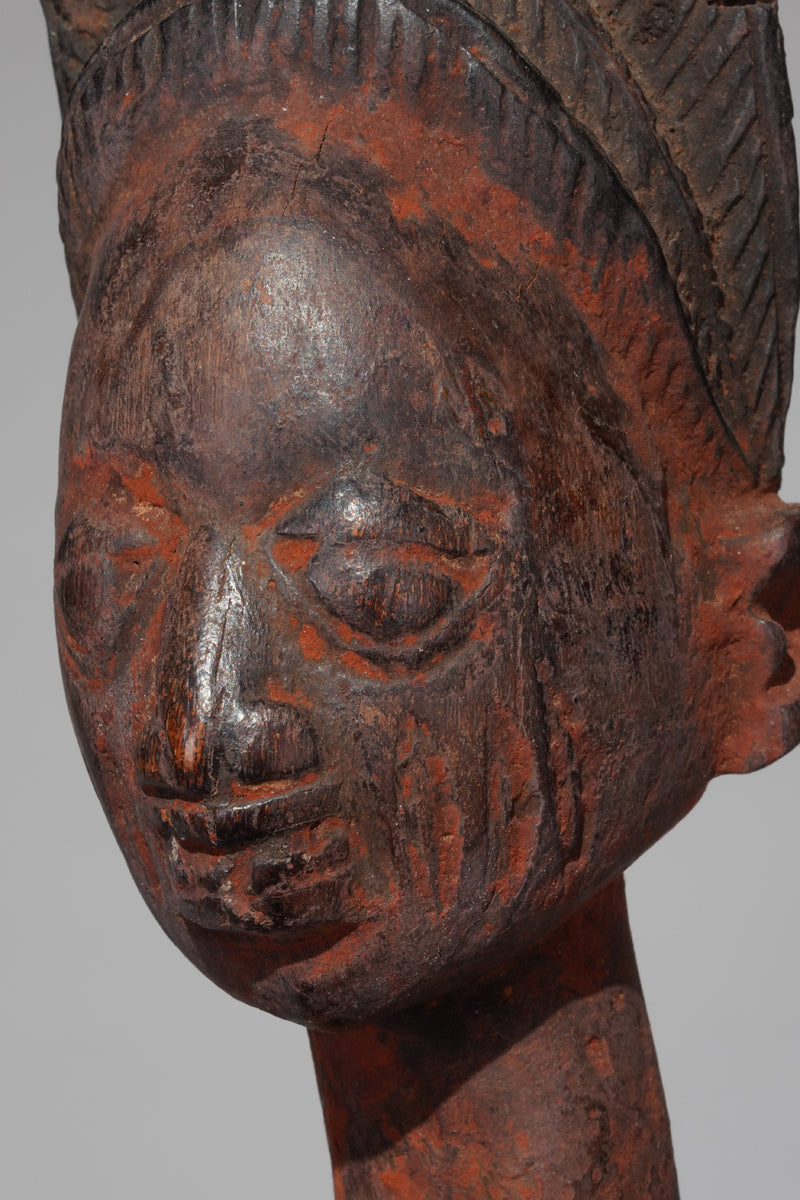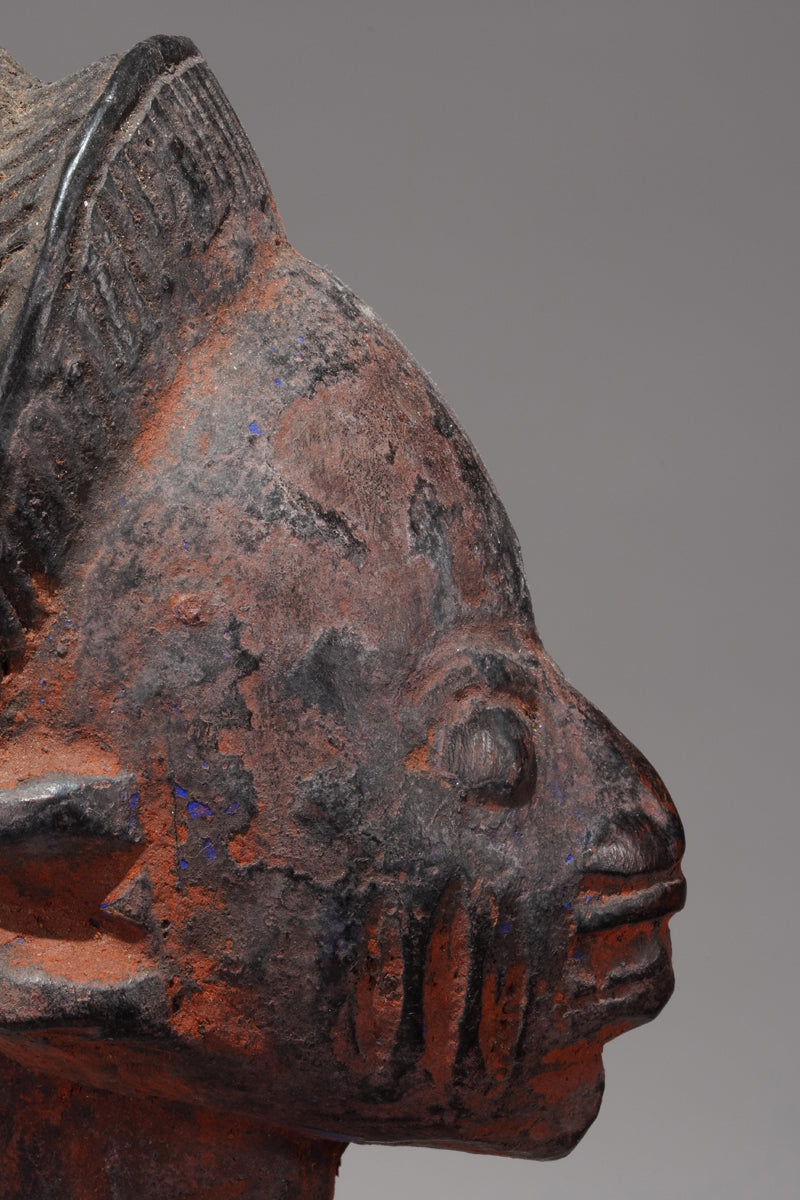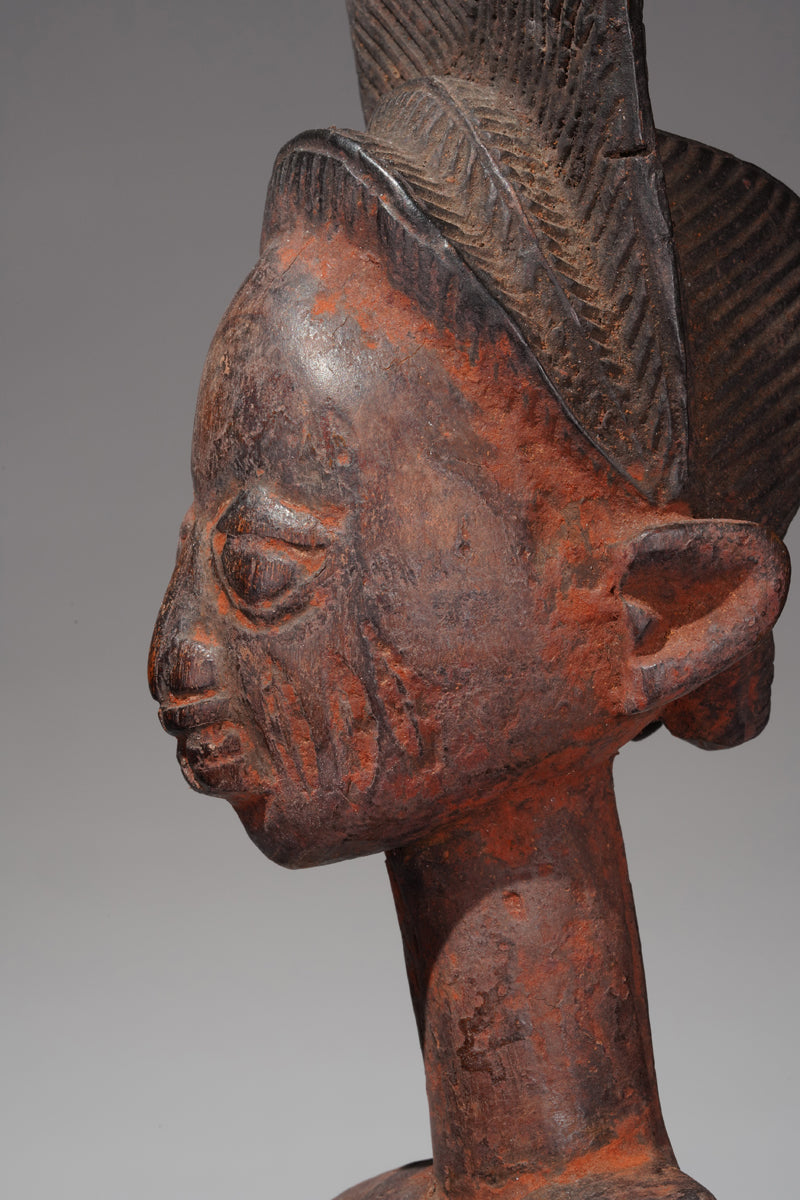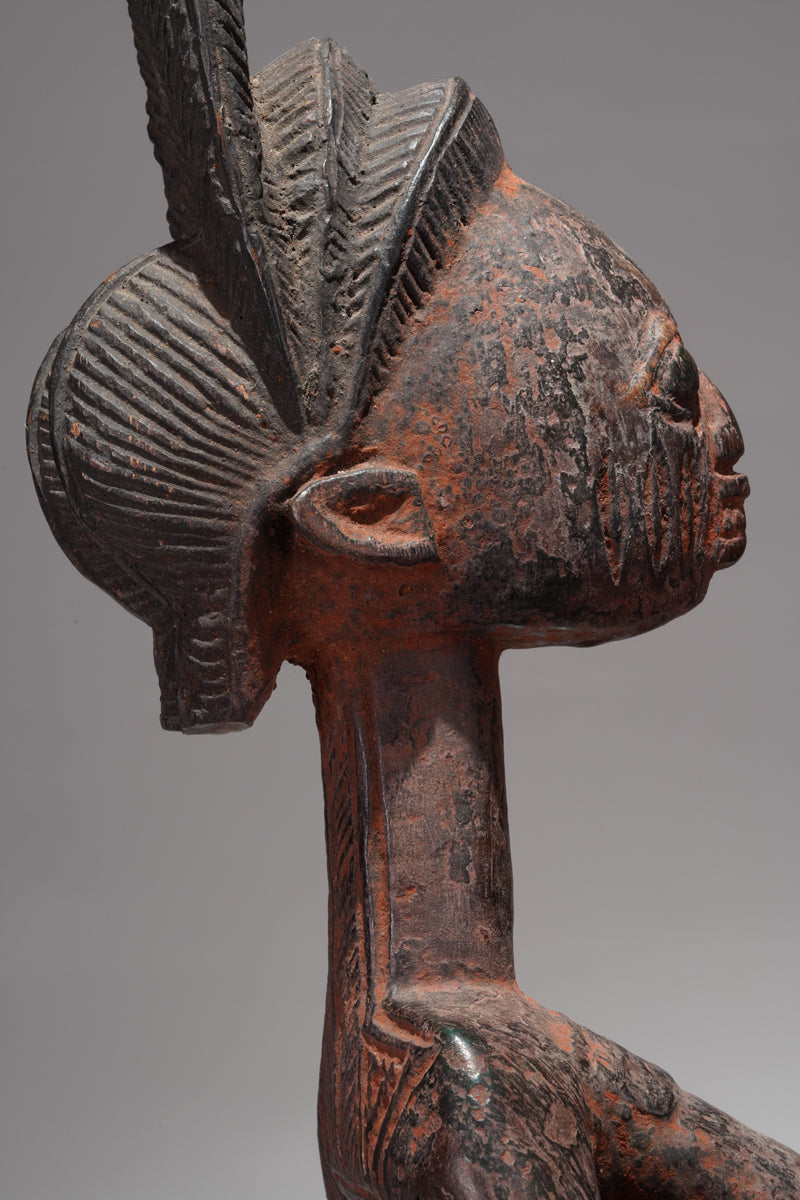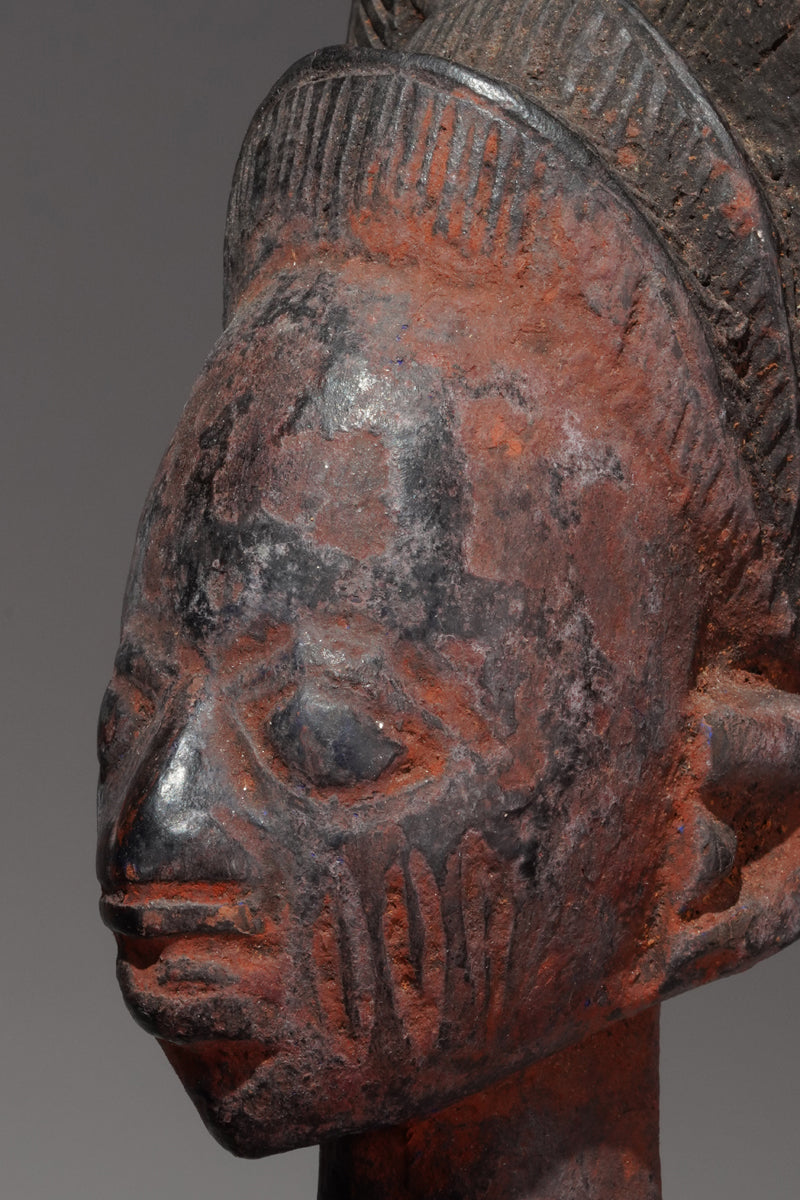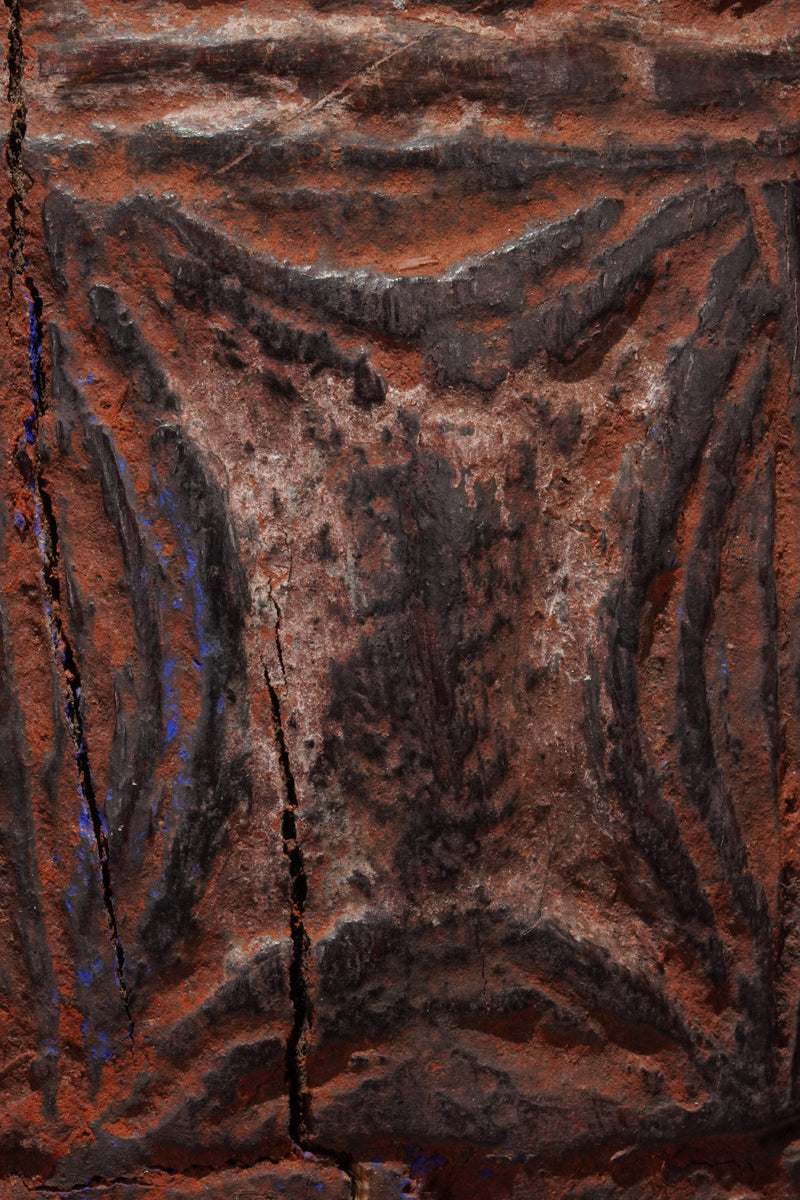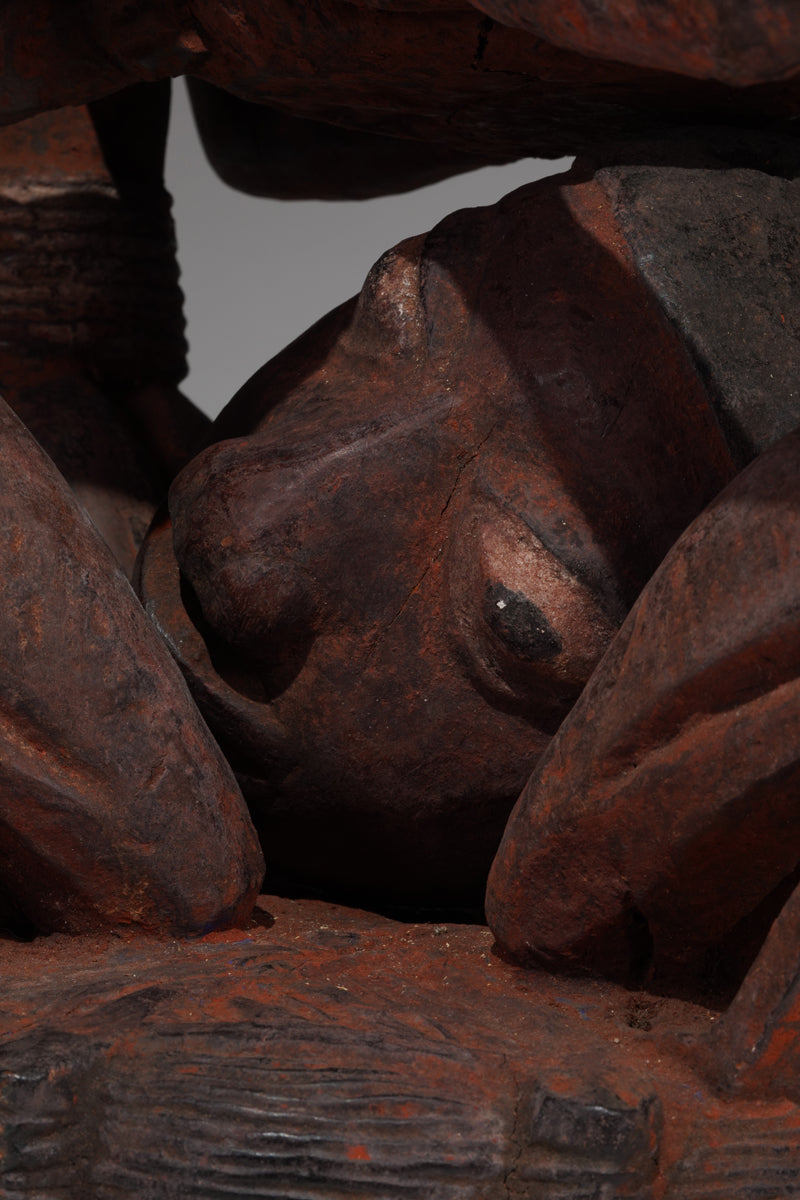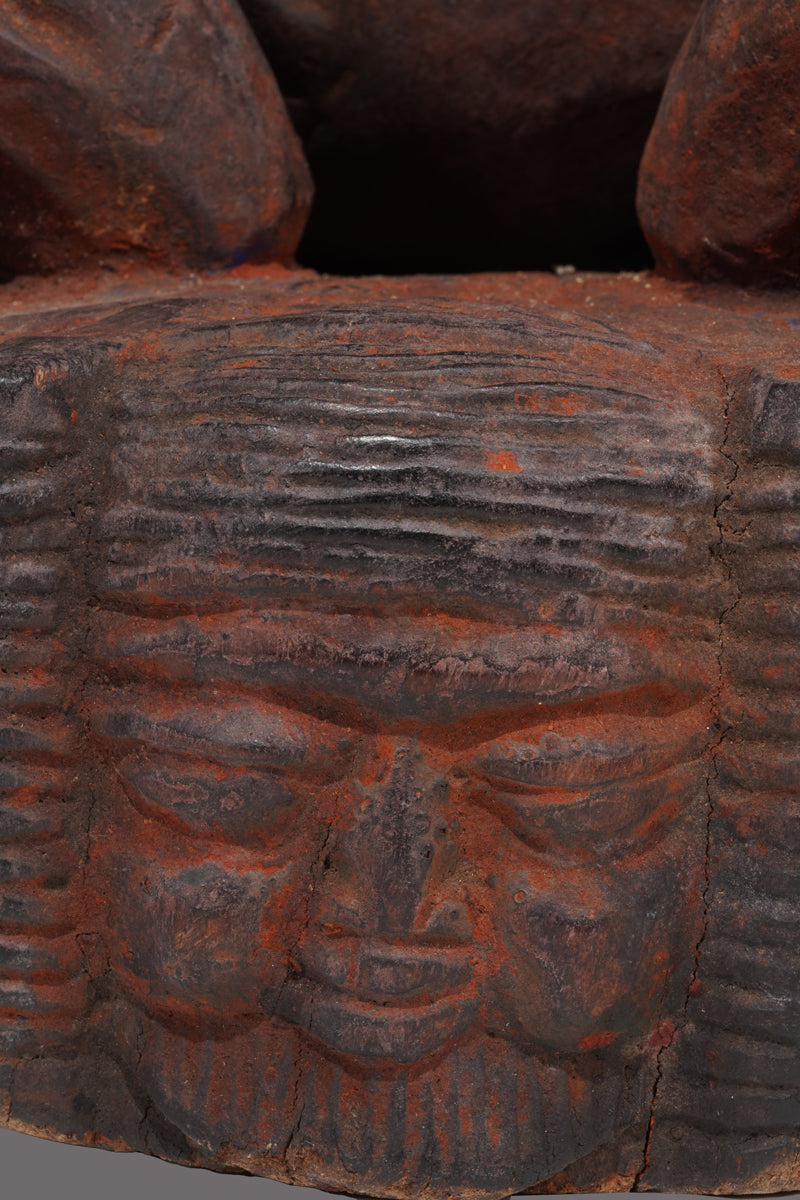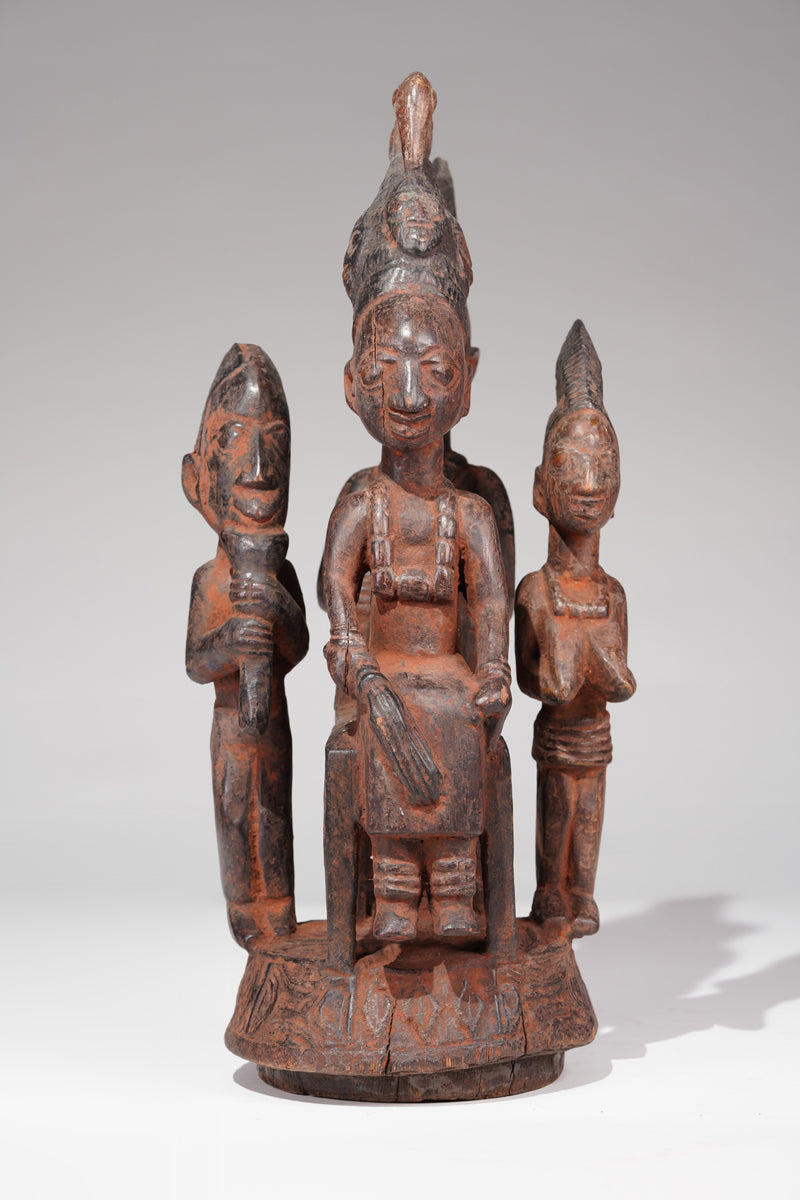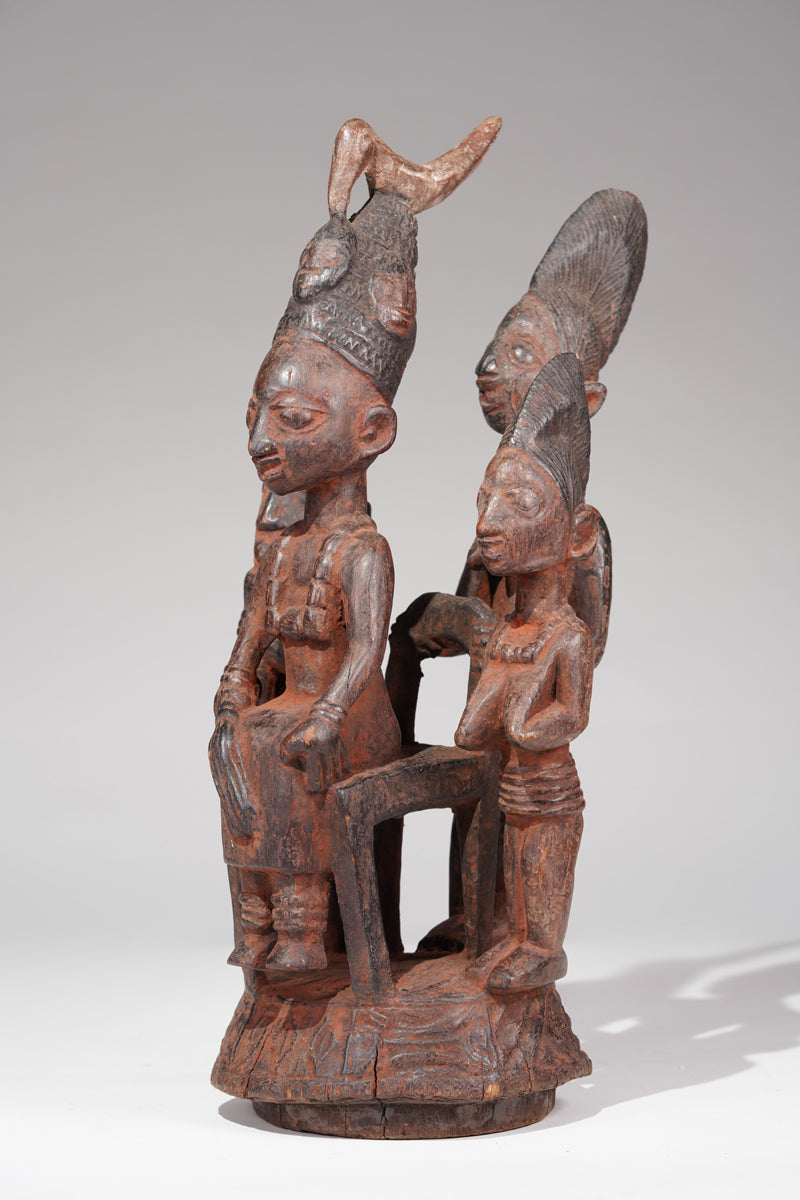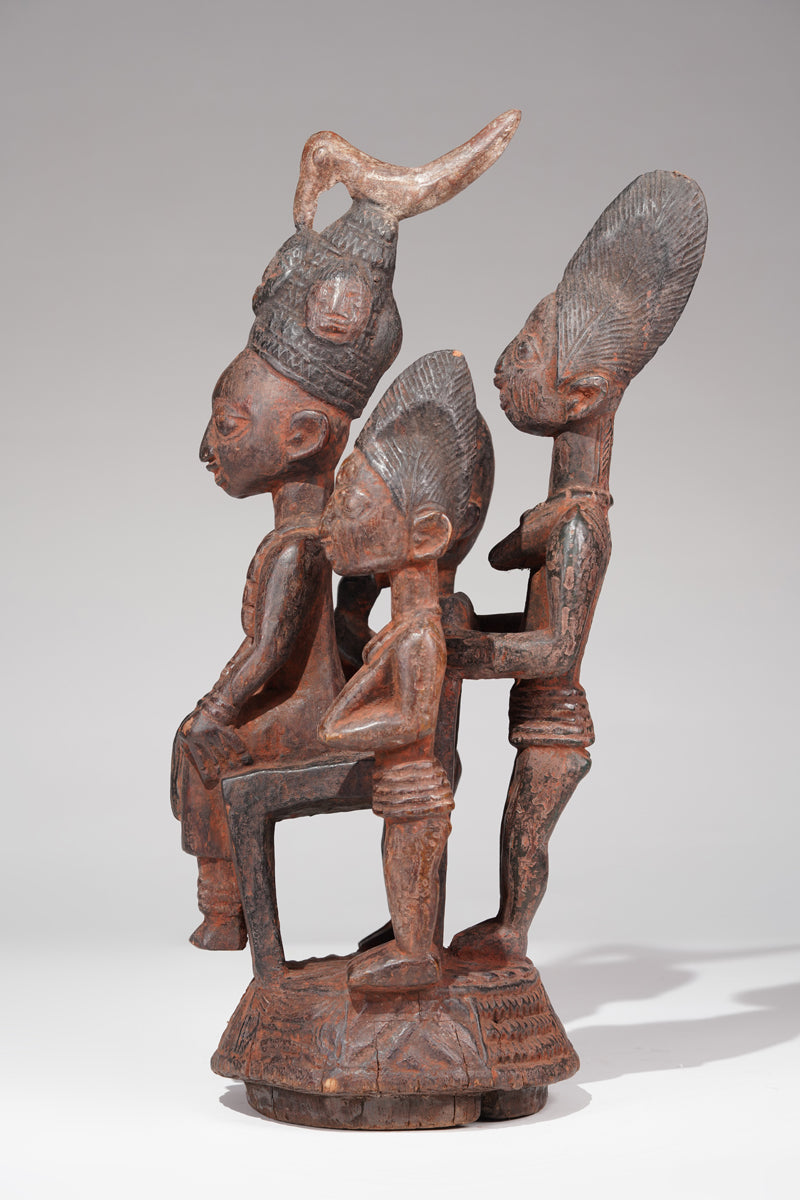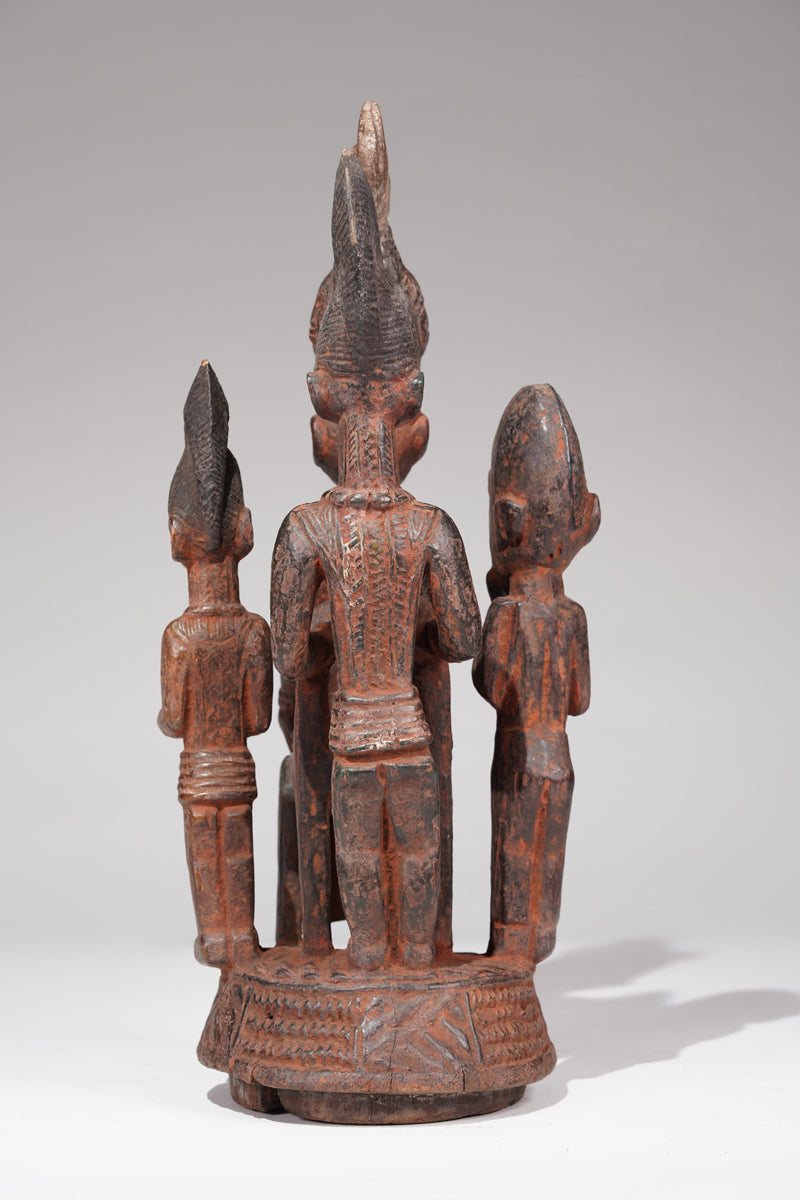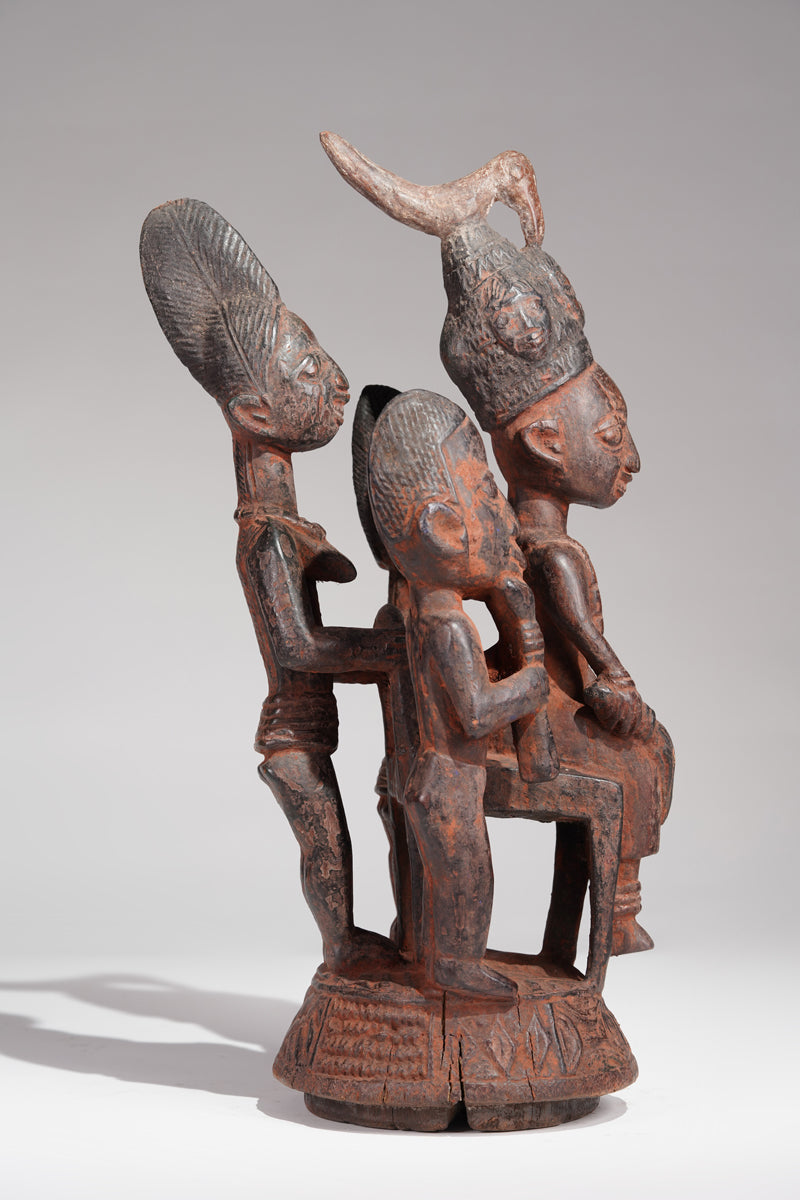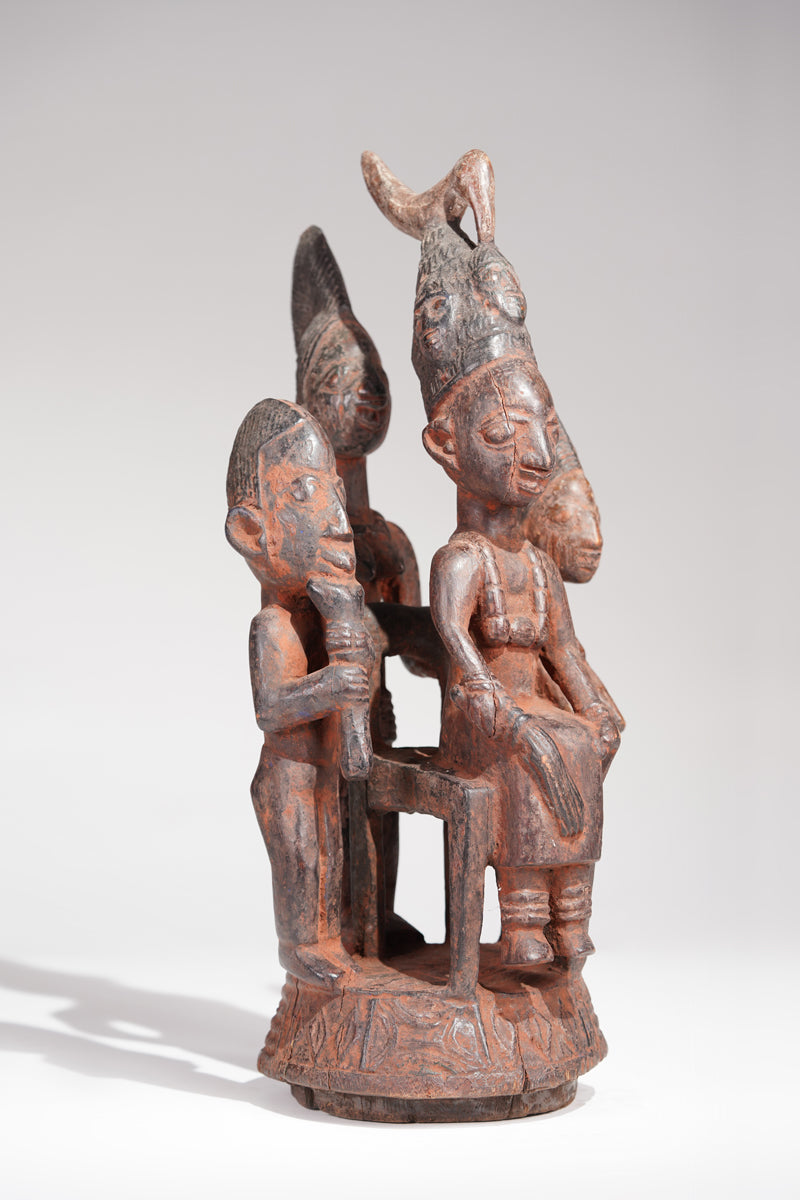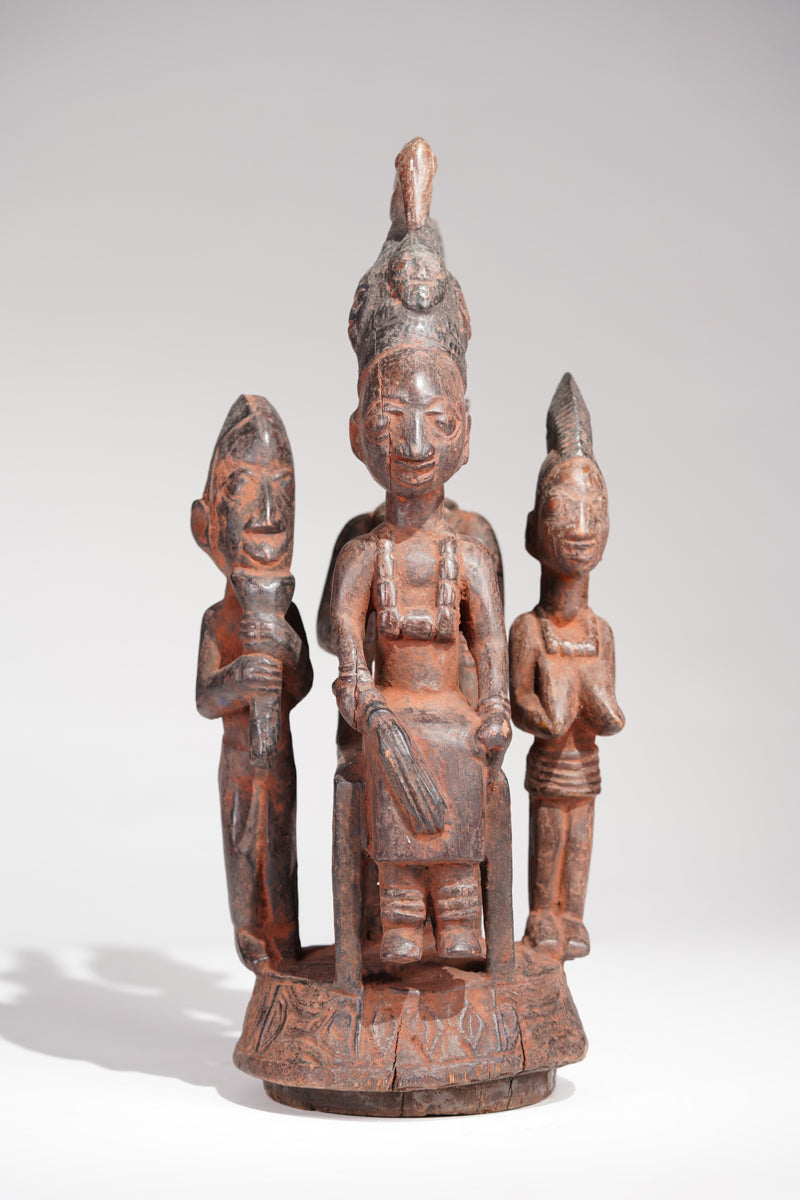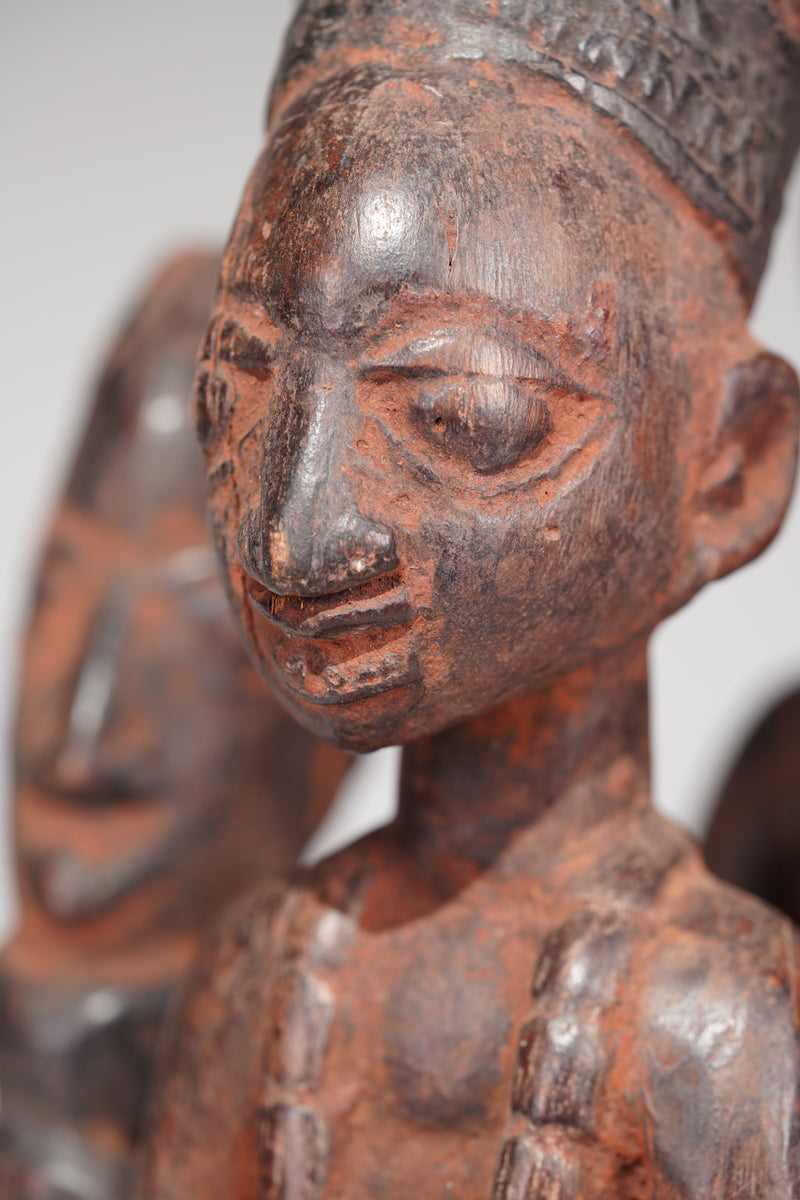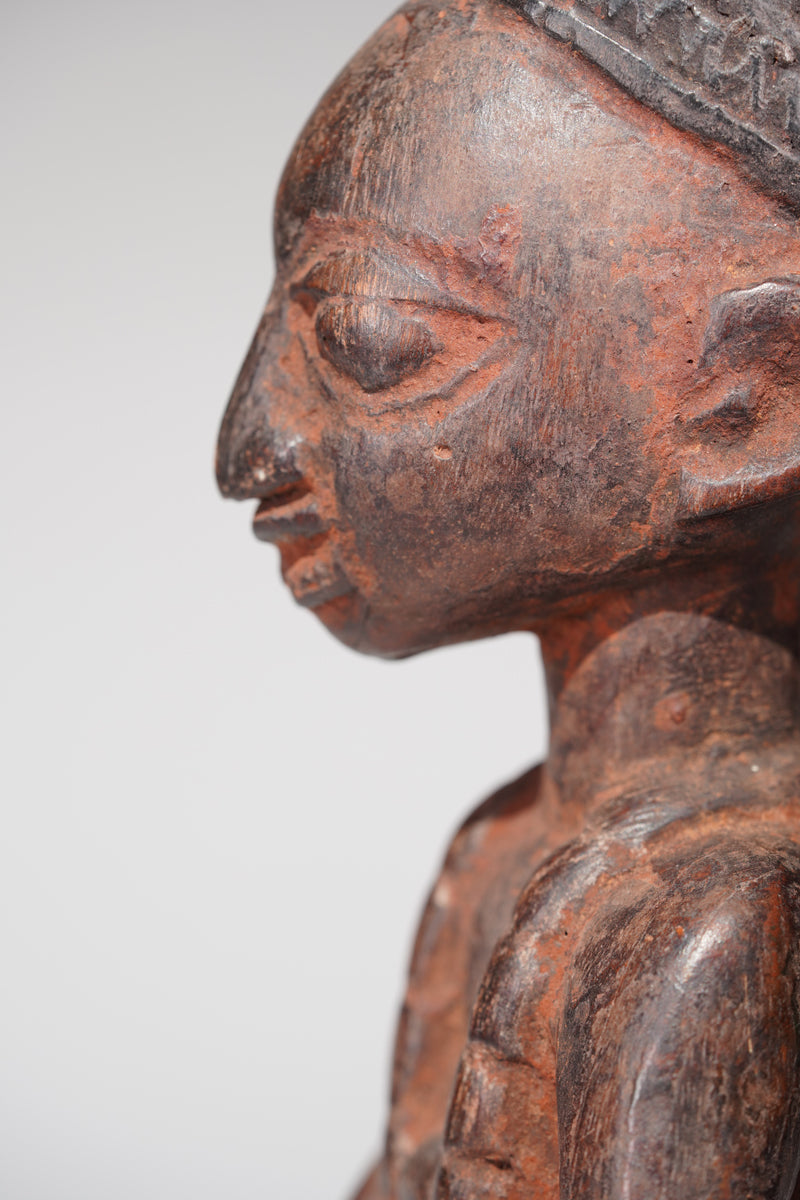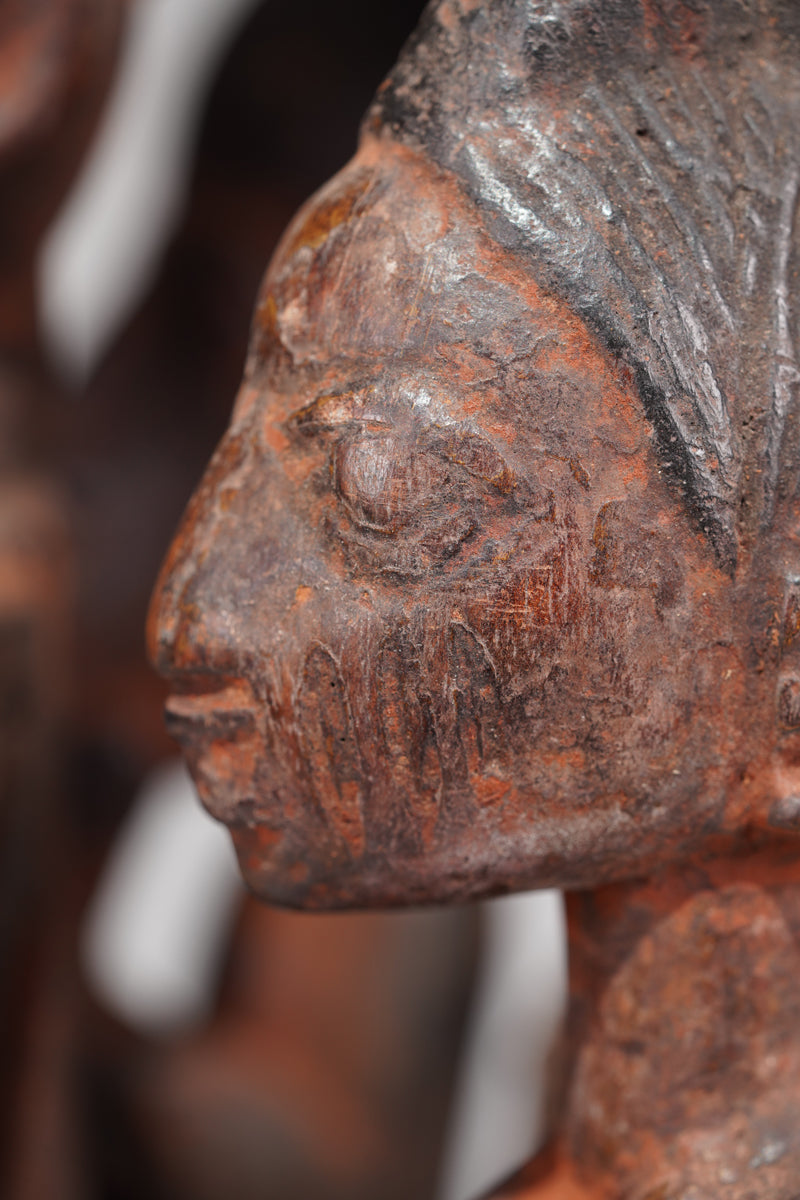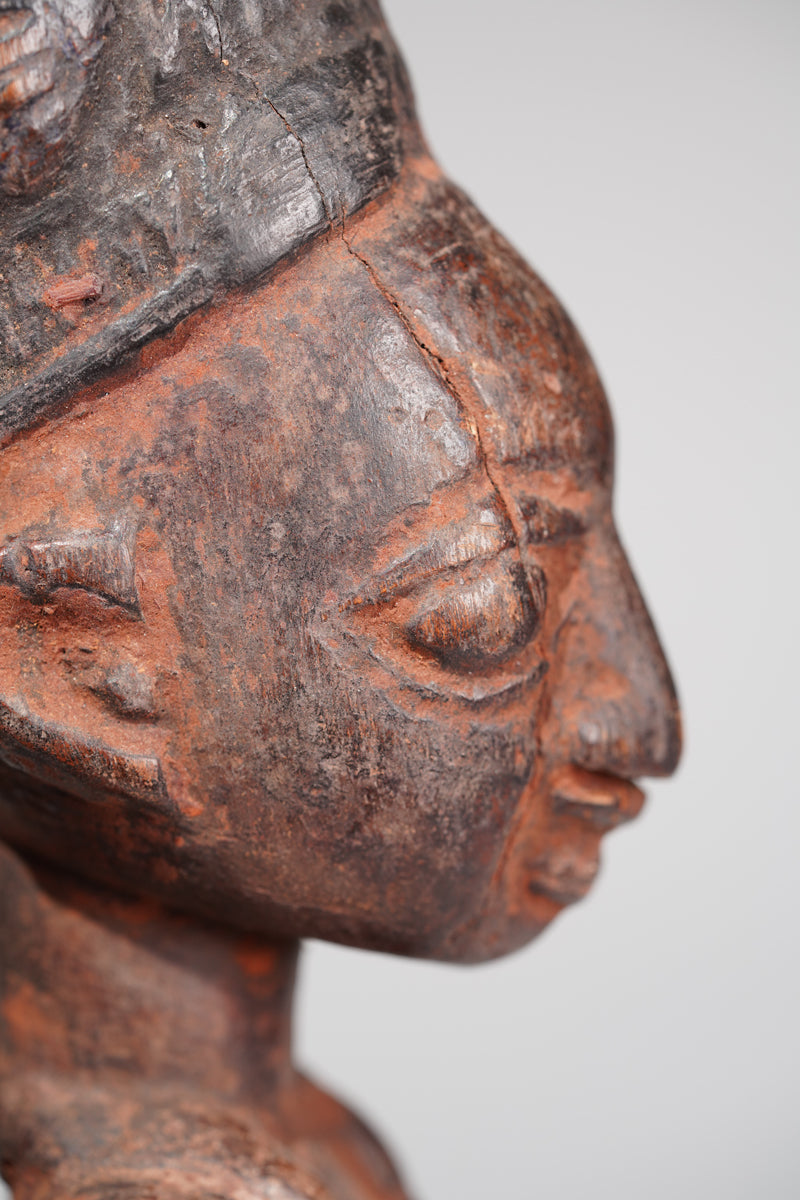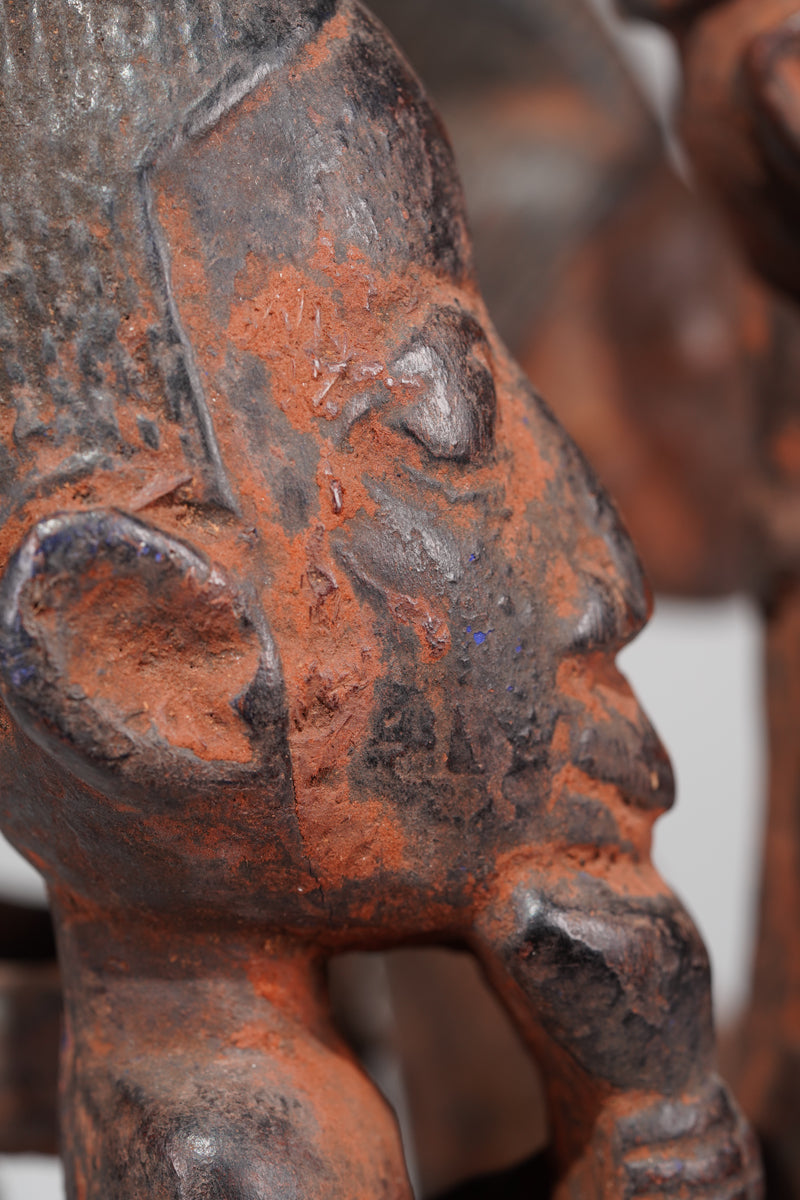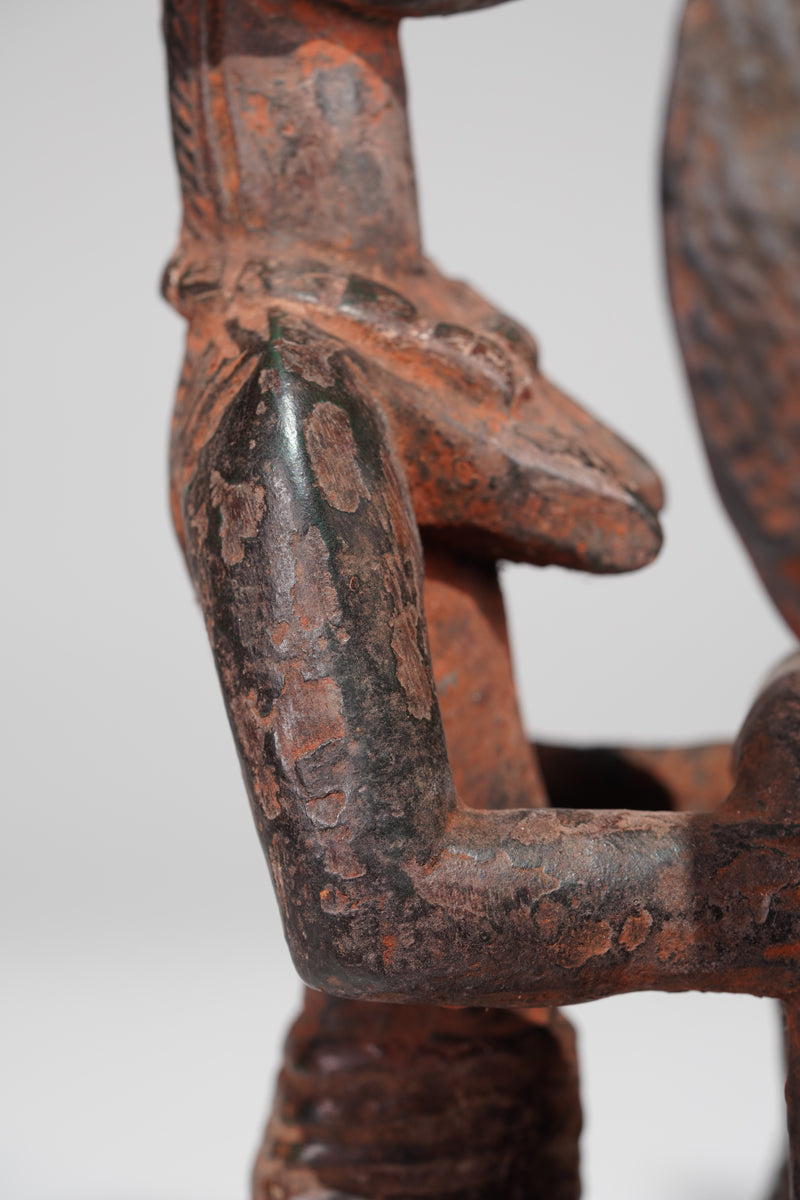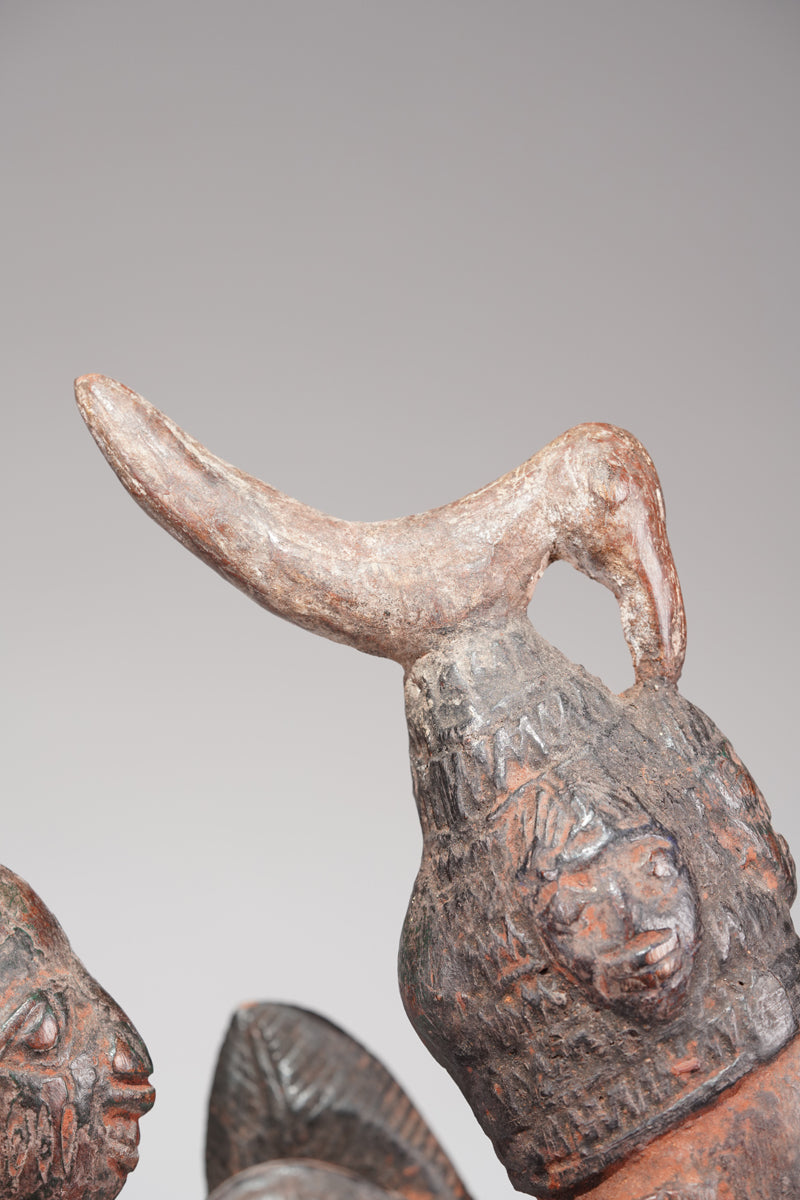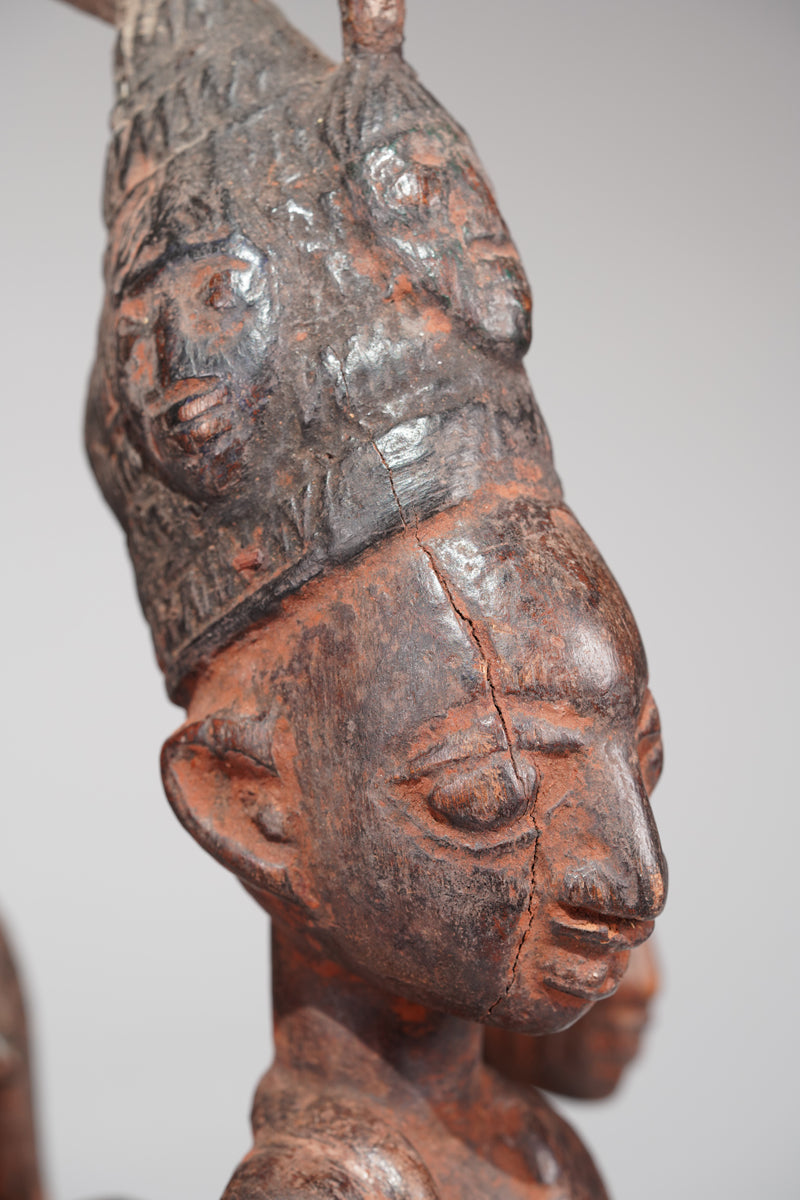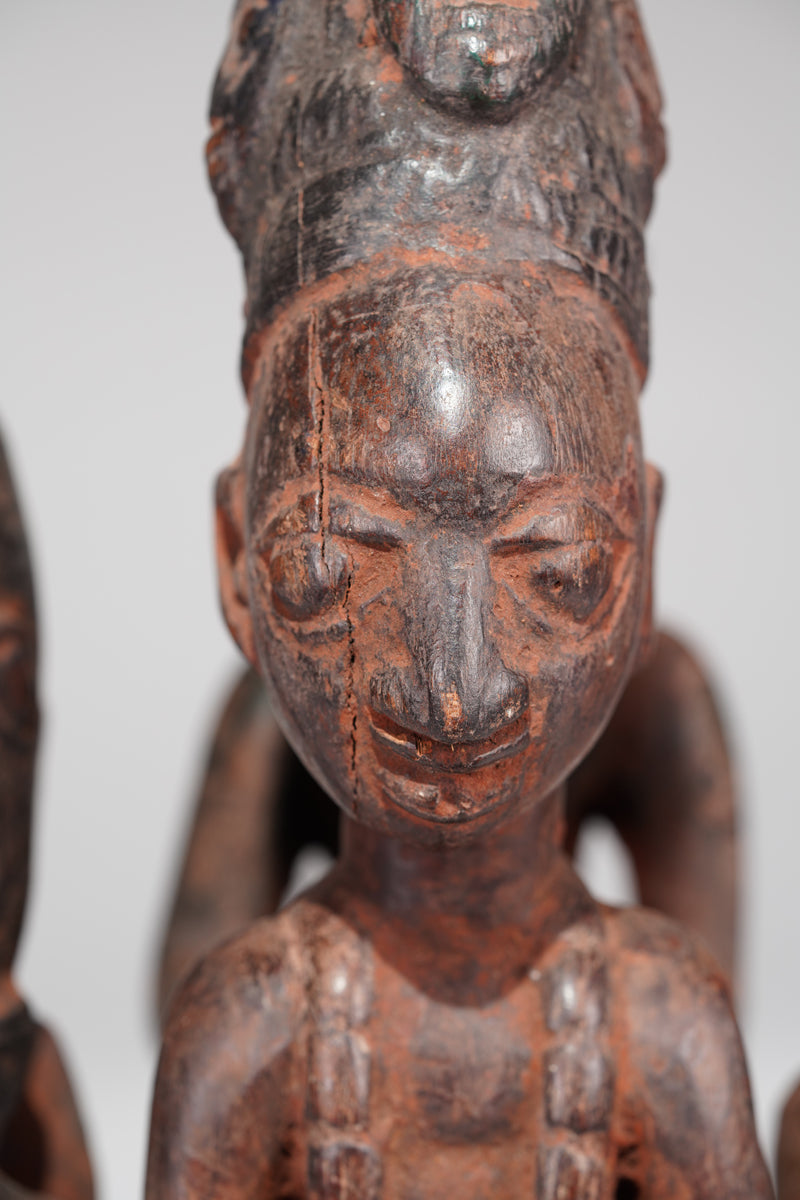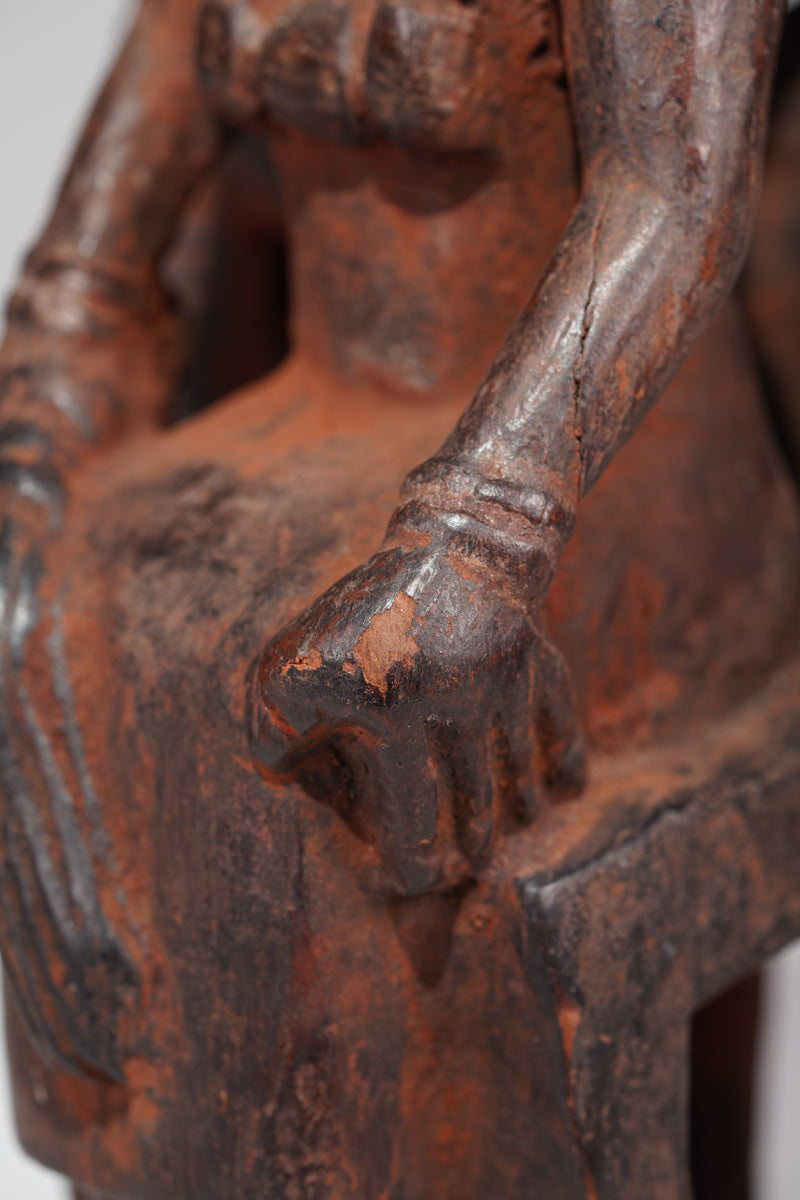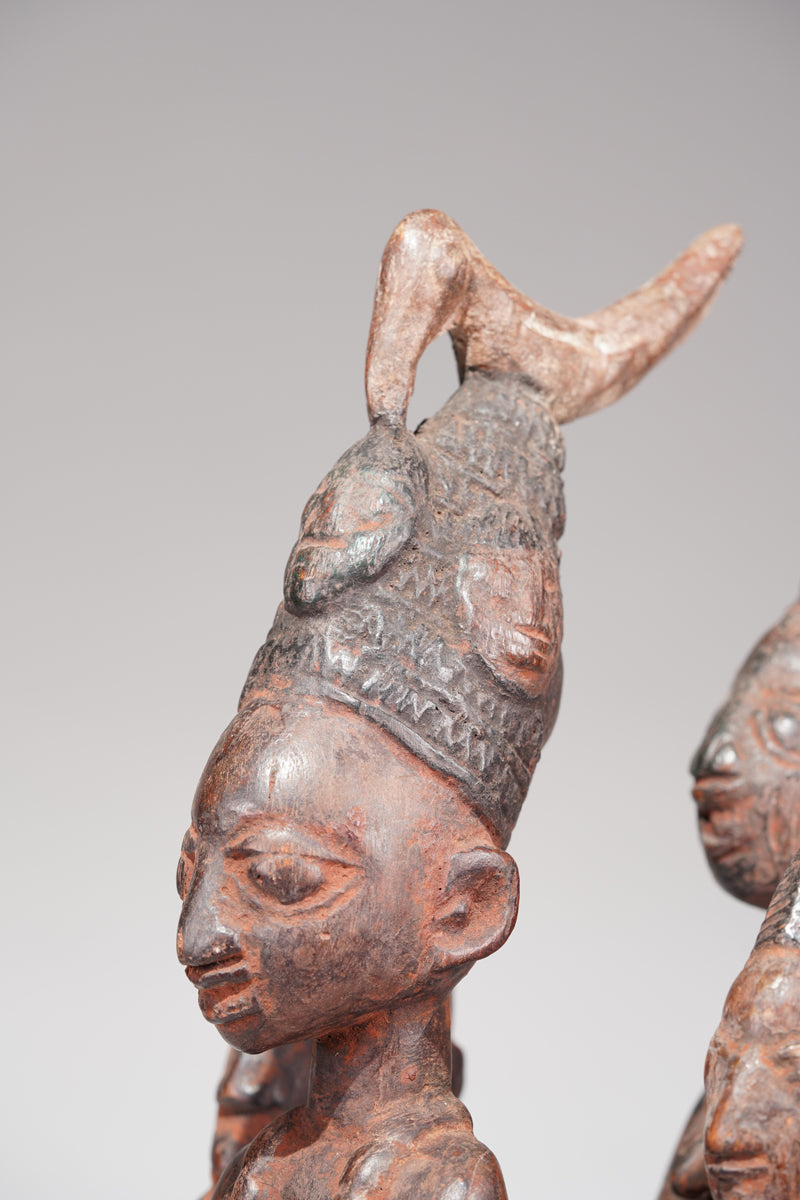wolfgang-jaenicke
A container most likely by Olowe of Ise
A container most likely by Olowe of Ise
Couldn't load pickup availability
"Olowe of Ise is considered the foremost Yoruba carver of the twentieth century. Born circa 1875 in Efon Alaye, Southern Ekiti, Olowe spent much of his long life in Ise, at the palace of the Arinjale, where he carved a series of veranda posts and many other sculptures commissioned by kings for their palaces, and by priests for their shrines, as well as ibeji figures for parents of deceased twins, and dolls for children. He resided for four years at the palace of the Ogoga of Ikerre carving the magnificent doors and veranda posts which now may be seen in the collections of major museums in Washington, D.C., Chicago, London, and Munich. In 1988, when I interviewed Olowe’s last surviving junior wife, Oloju-Ifun Olowe, she sang an oriki, a praise song or attributive name, in honor of Olowe, “leader of all carvers,...the master.
https://jaenicke-njoya.com/Bi502/pages/DSC07404.htm
: 
A late work of Olowe, exhibited and sold Wolfgang Jaenicke Gallery 2021,
In 1998 Roslyn A. Walker organized an exhibition at the National Museum of African Art, Smithsonian Institution and prepared a catalogue in celebration of Olowe of Ise: A Yoruba Sculptor to Kings. Exhibition and catalogue revealed Olowe to be a prolific carver, as his oriki indicated, but also an artist with extraordinary skill and imagination. When he was at the height of his ability and fame in the early decades of the twentieth century, there were other highly skilled carvers in the Ekiti area who were also masters in sculptural art: Agbonbiofe and Obembe of Efon Alaye in southern Ekiti; Bamgbose, Areogun, Bamgboye and Osamuko in northern Ekiti. They were all great carvers and artists, but not one worked with the artistic imagination that is to be found in the sculptures created by Olowe.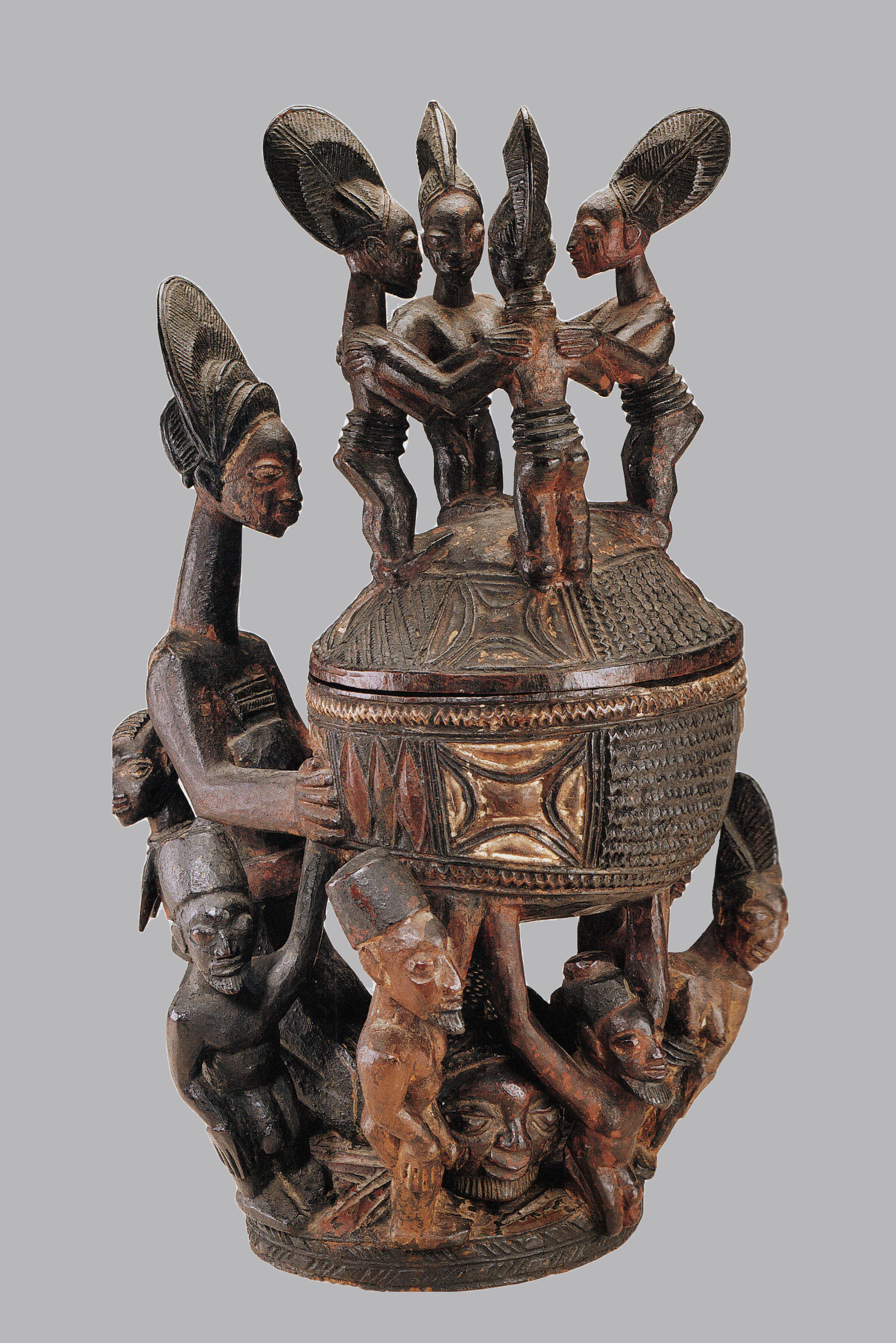
Adele Walker, Olowe of Ise, a Yoruba sulptor of kings,
Smithsonian Institution, 1998.
Two of Olowe’s most famous sculptures are similar in depicting a kneeling female figure holding a bowl, which is supported by smaller kneeling or standing figures from below and with additional figures on the lid. In one instance, the figures are four dancing women. On the other, two cocks face one another. Beneath the bowl and held within its own space is a man’s head that freely rolls about. One of the bowls is in the Walt Disney-Tishman African Art Collection; the other is in the collection of the National Museum of African Art. Now there is a third, slightly smaller in scale but equally brilliant in its complexity of composition and excellence of condition.
Two of Olowe’s most famous sculptures are similar in depicting a kneeling female figure holding a bowl, which is supported by smaller kneeling or standing figures from below and with additional figures on the lid. In one instance, the figures are four dancing women. On the other, two cocks face one another. Beneath the bowl and held within its own space is a man’s head that freely rolls about. One of the bowls is in the Walt Disney-Tishman African Art Collection; the other is in the collection of the National Museum of African Art. Now there is a third, slightly smaller in scale but equally brilliant in its complexity of composition and excellence of condition. Two of Olowe’s most famous sculptures are similar in depicting a kneeling female figure holding a bowl, which is supported by smaller kneeling or standing figures from below and with additional figures on the lid. In one instance, the figures are four dancing women. On the other, two cocks face one another. Beneath the bowl and held within its own space is a man’s head that freely rolls about. One of the bowls is in the Walt Disney-Tishman African Art Collection; the other is in the collection of the National Museum of African Art. Now there is a third, slightly smaller in scale but equally brilliant in its complexity of composition and excellence of condition.
As on the other bowls, we have the large female figure whose hands touch the sides of a large bowl which is lifted high by four kneeling female figures. On the lid, four birds peck at a mound of feed; and a male head is imprisoned behind the figures holding the bowl. The surface of the bowl and lid, as well as the base, is decorated with a variety of designs found on many of Olowe’s carvings, their decorative significance enhanced by Olowe’s careful painting. He was one of the few artists who painted many of his carvings and was a superb colorist. In a few places on the figures holding the bowl aloft, one can see two or three layers of paint due to slight surface abrasion. There is an oil based paint of turquoise or light green with additional layers of paint used to apply various colors. The interior of the bowl and lid are not painted, although there is some surface variation giving evidence of use. 
Olowe of Ise Bowlkeeper, exhibited and sold 2004 in NY
Olowe’s genius as an artist was threefold. He was skilled in the use of his tools, ifarabale, a master of composition, oju-ona, and addressed his subject matter with extraordinary insight, oju-inu. The large bowl, with its elaborately decorated surface, is beautifully balanced by the slender, kneeling female figure whose long neck and soaring coiffure carries the viewer’s eye away from the bowl. And yet, her face concentrates on the bowl, since she too is a container of power. The smaller figures below the massive bowl lift it with apparent ease, their bodies leaning out into the surrounding space, the hand of one reaching up to hold onto the mother’s arm, for they are the children of her offering. Viewed from the mother’s back, which is skillfully incised and painted, strengthening the vertical line in relationship to the sphere of the bowl, one observes that her body leans a bit to the right. However, Olowe places her right hand a bit lower than the left hand on the bowl, thus catching its weight and thereby adding a graceful touch of motion to the composition.
In all three sculptures, Olowe is celebrating the aesthetic ideals of feminine beauty. In his essay, “Osun: the Seventeenth Odu,” Rowland Abiodun (2001) cites the following Ifa verse collected by Wand Abimbola:
Whiteness is the beauty of the teeth;
Just as a long, graceful neck
And full, erect breasts make the beauty of women.
What is striking in each of these sculptures is the way in which Olowe depicts the “long, graceful neck.” A comparison of the three bowls reveals that Olowe extends the length of the neck in the sculptures in the Disney-Tishman and National Museum of African Art collections. In each the neck is longer and narrower, enhancing the graceful curve that extends from her feet to the elaborate hairstyle with the suggestion of a tilt of the head toward the opposing birds or the dancing figures on the lid of the bowl. To be sure, the latter sculptures are somewhat larger than the one presented here. The sculpture in the National Museum of African Art is by far the most ambitious in its sculptural program and in the skillful and detailed carving of all of the figures. In this work, Olowe is pushing the limits of his conceptual powers, his virtuosity in composition, oju-ona, for the sculpture virtually explodes into space. The Disney-Tishman and present work are similar in total composition and in their depiction of the four smaller female figures lifting the bowl, the larger kneeling female figure and her soaring hair style. However, as we have noted, in the length and narrowness of the neck and the larger birds on the bowl, the carving appears to be a development of the essential ideas of the smaller sculpture. Hence, one might reasonably conclude that the present sculpture is the earliest of the three carvings.
Bowls such as this one were used by Yoruba rulers to hold kola nuts, which were given to visitors as a gesture of welcome and friendship. Often the guest and others present would chew kola while conversing. The bowl may have been commissioned by its original owner, although it is more likely that it was a presentation gift to an elder or person of importance by one who wished to express his admiration or, perhaps, gratitude for favors rendered. In the crowned town of Ila-Orangun, which borders on the Ekiti area, each year the carvers would compete in giving the Oba, ruler, a carving on the occasion of Odun Oro, the festival for the Oba’s crown. It is remembered that on one occasion, the Oba was so impressed by the skill and artistry of a carver from Inurin’s compound that he gave one of his daughters to be a junior wife of the carver.
The sculpture has been in the possession of a family in England since the day it was brought by the present owner’s great uncle, Edwin Holland, from Nigeria. Holland was a Sergeant in the British Army, and was an engineer whose specific skill was telegraphic work. He was appointed Assistant Superintendent for Telegraphs in Nigeria (later Posts and Telegraphs, Southern Provinces) on January 10, 1912 and remained in that position until 1919, when he returned to England. He died in 1929, at which time the sculpture came into the possession of the cousin of the present owner, from whom it was received. It has never been out of the family. This clearly suggests that the carving may be dated between 1910 and 1918, especially if it is the case, as suggested above, that this is the earliest of the three sculptures."
Source: John Pemperton III, 2004.
Height: 92 cm
Width: 55 cm
Weight: 12,7 kg
